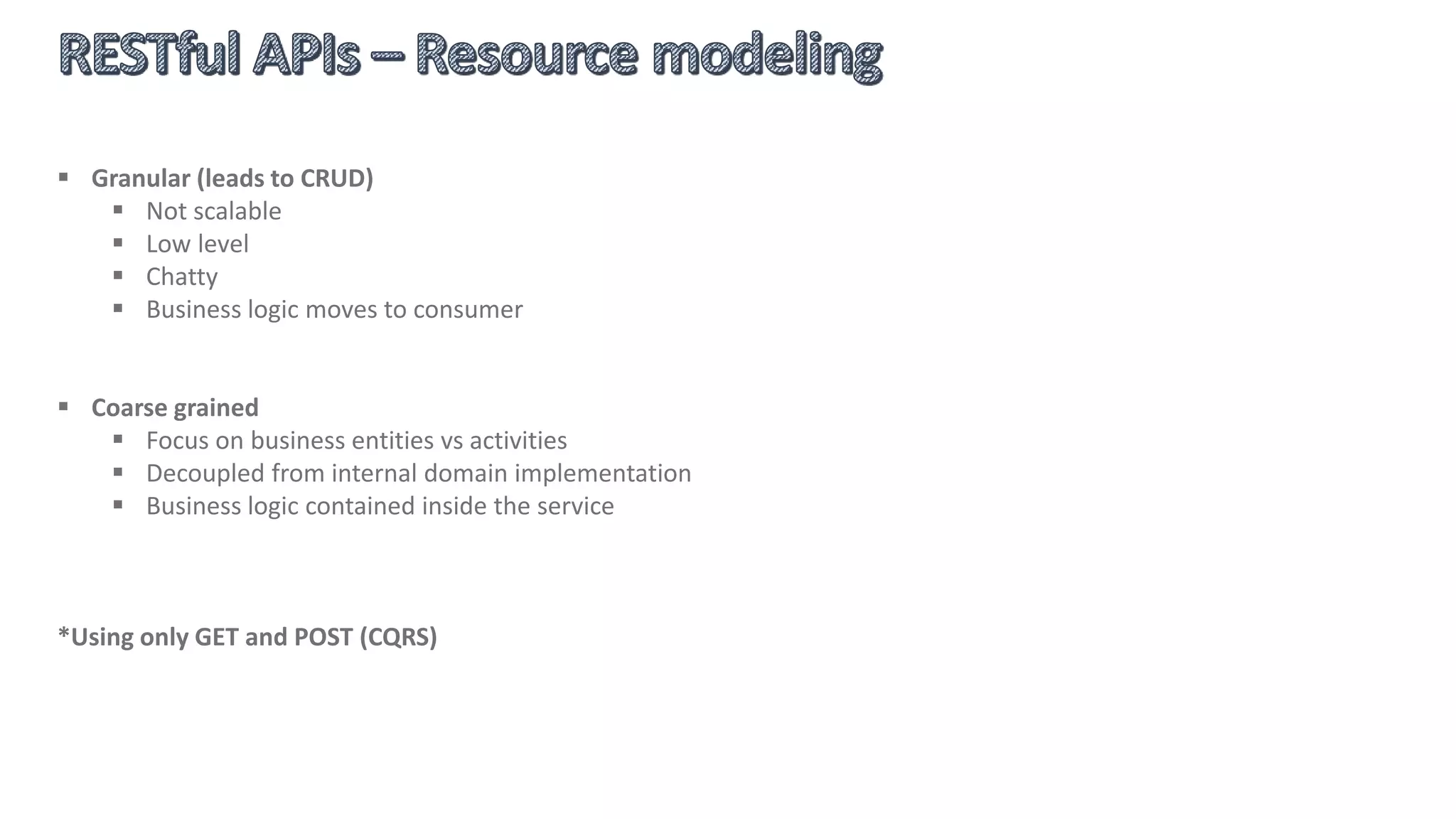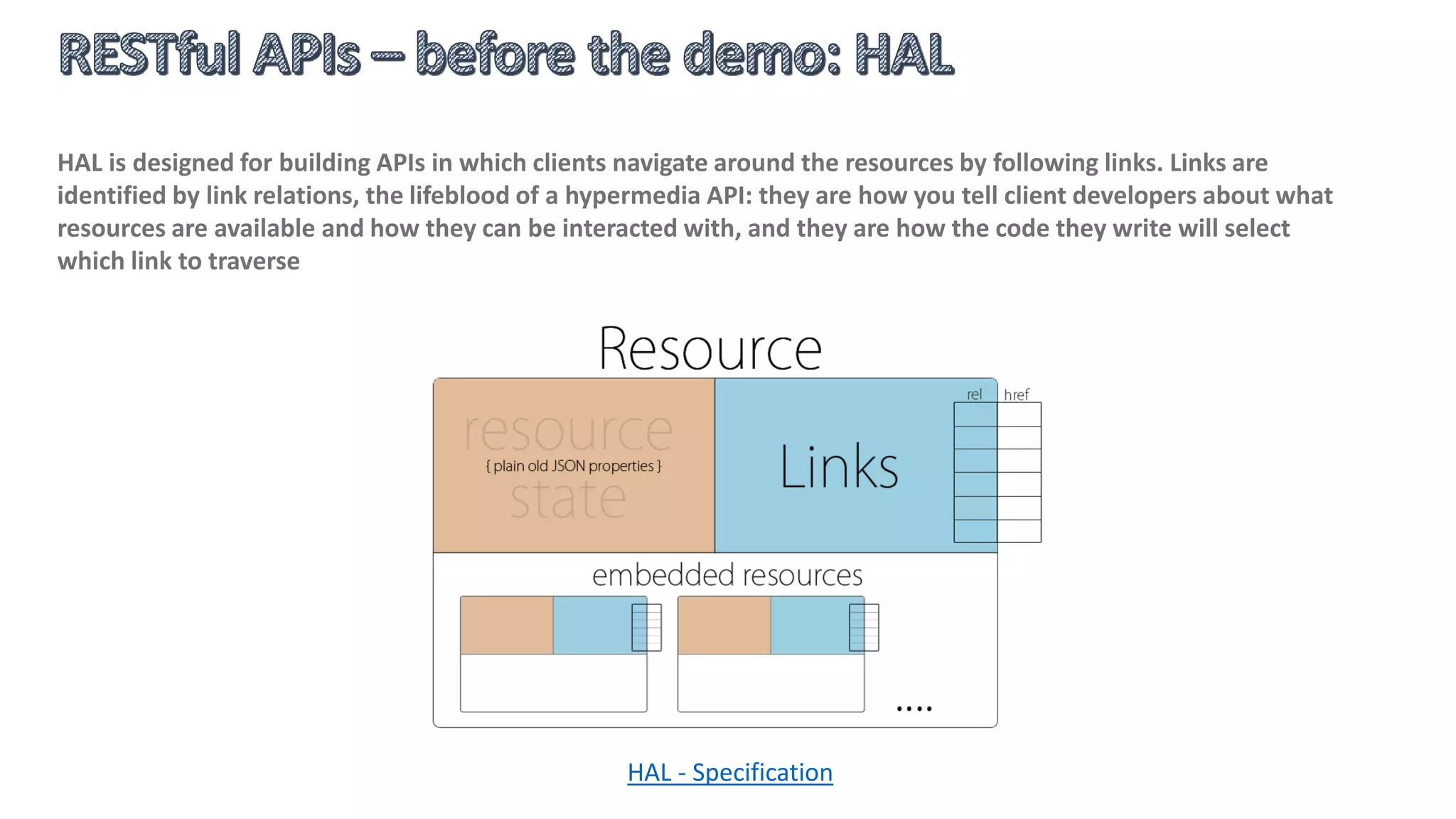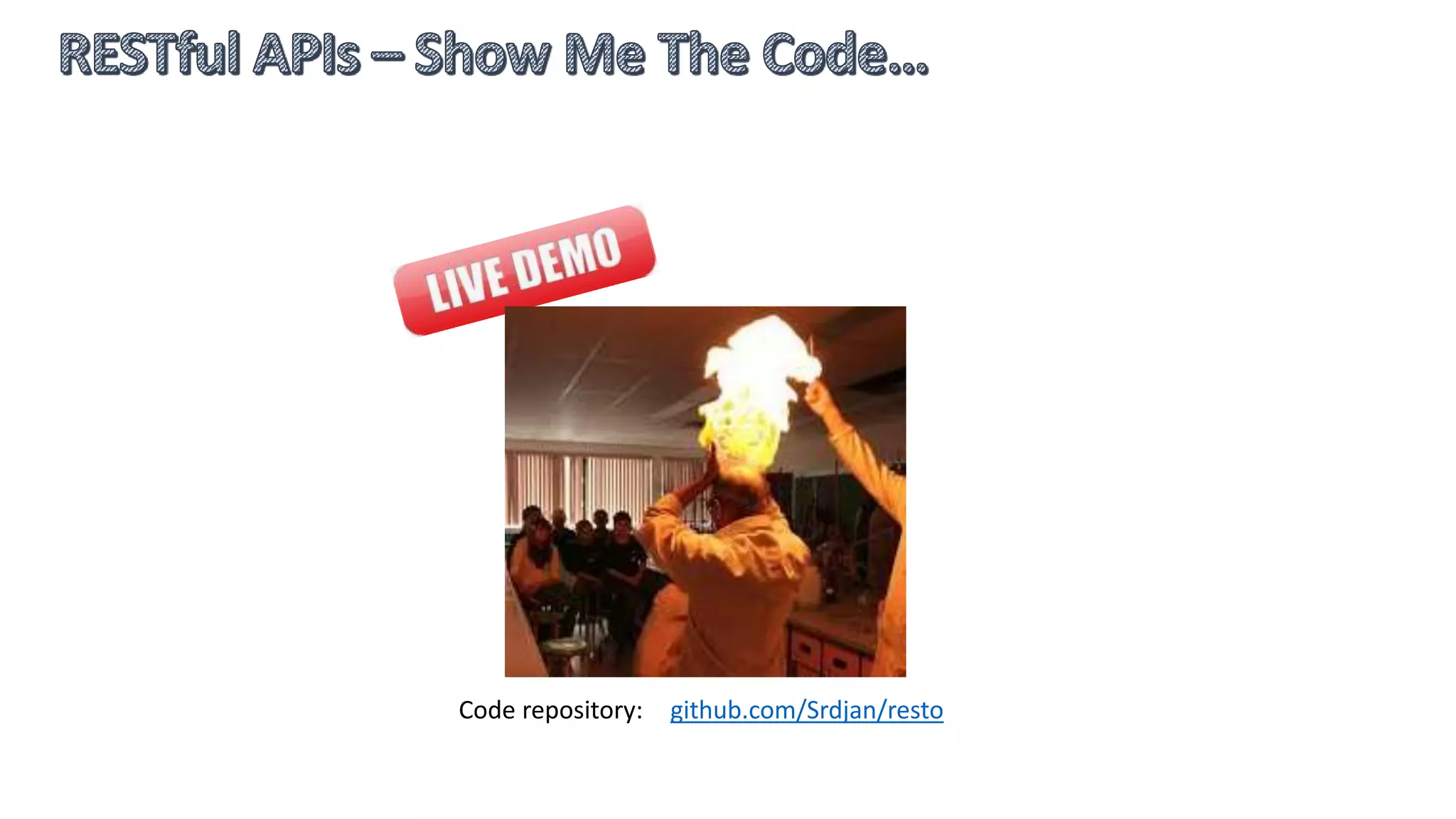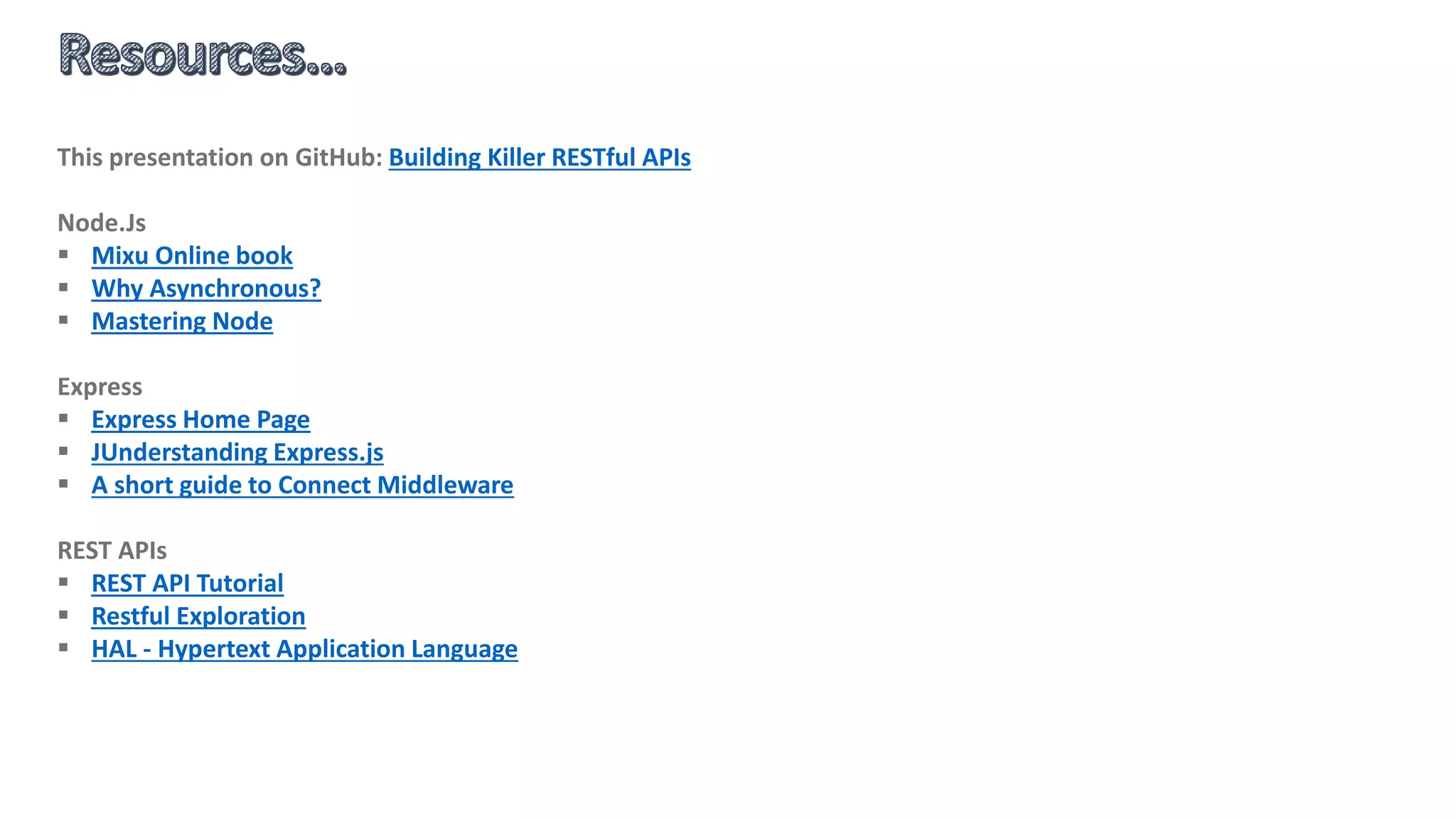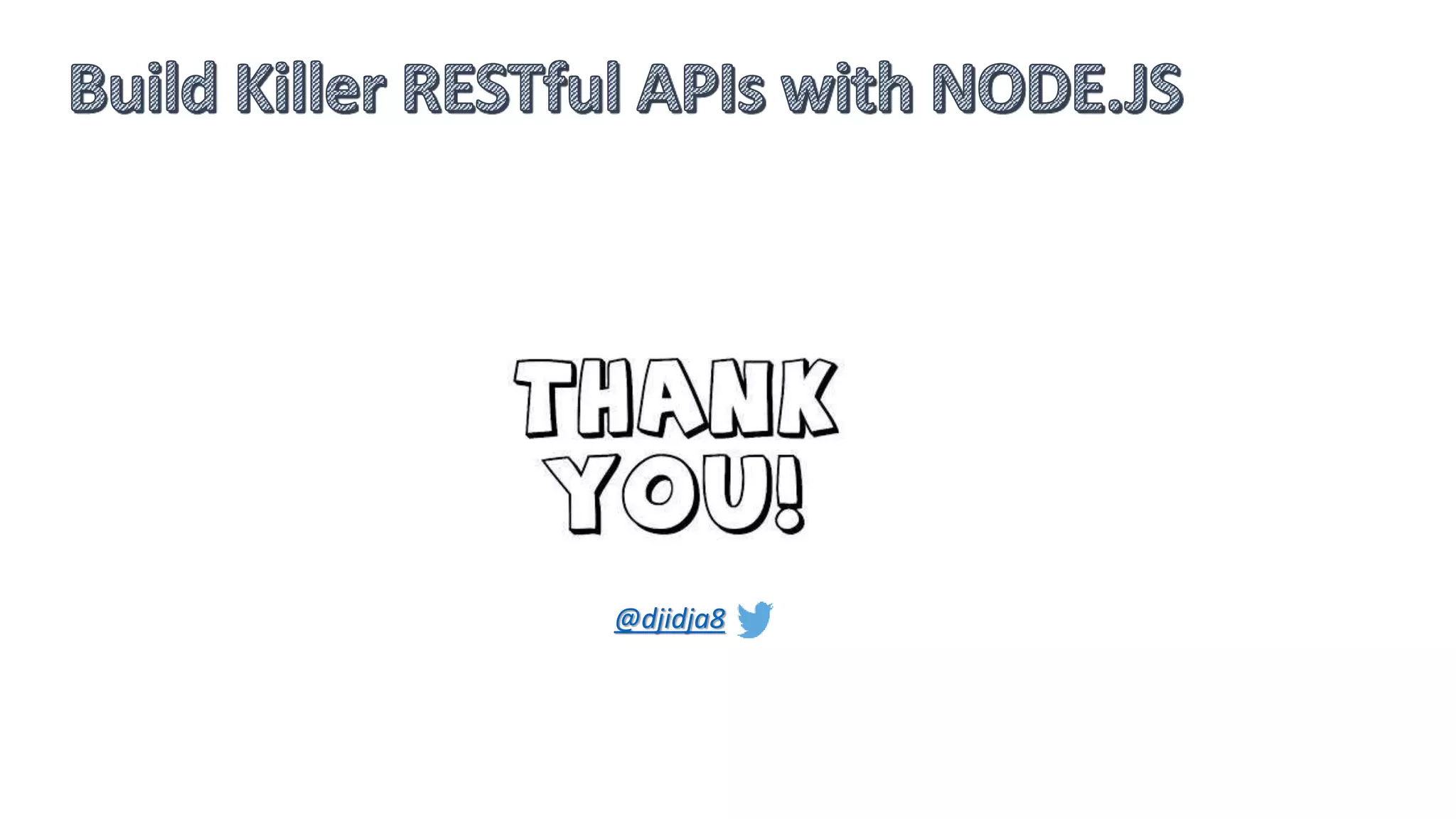The document discusses Node.js and how it provides a runtime environment and libraries for building server-side JavaScript applications. It describes key Node.js components like the V8 JavaScript engine, libuv library, and non-blocking I/O. It also covers the Node package manager NPM and how Express.js is a web framework built on Node.js that simplifies building web apps and APIs using middleware, routing, and other features. The document advocates for building RESTful APIs that follow best practices like using a uniform interface, being stateless and cacheable.
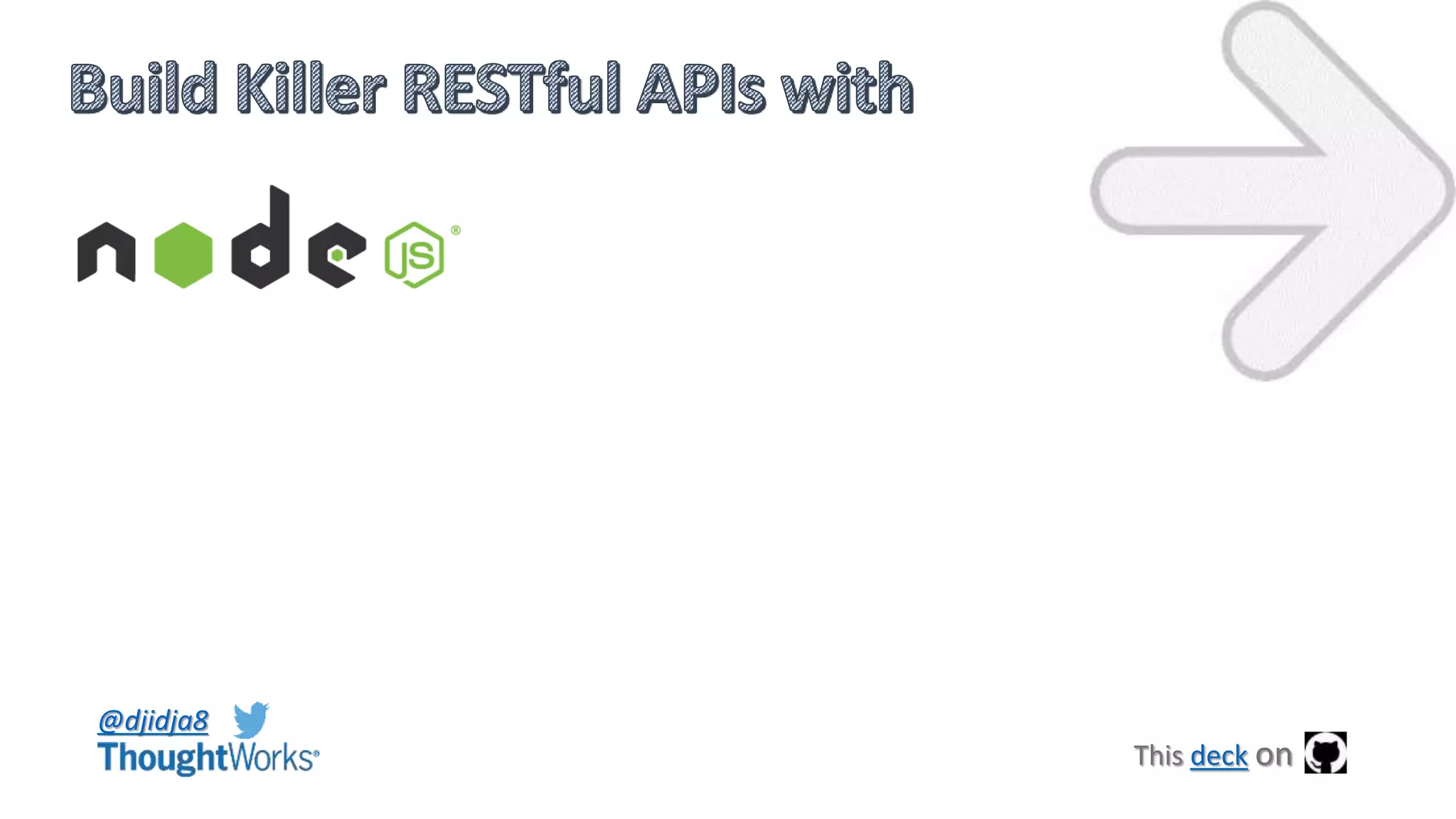
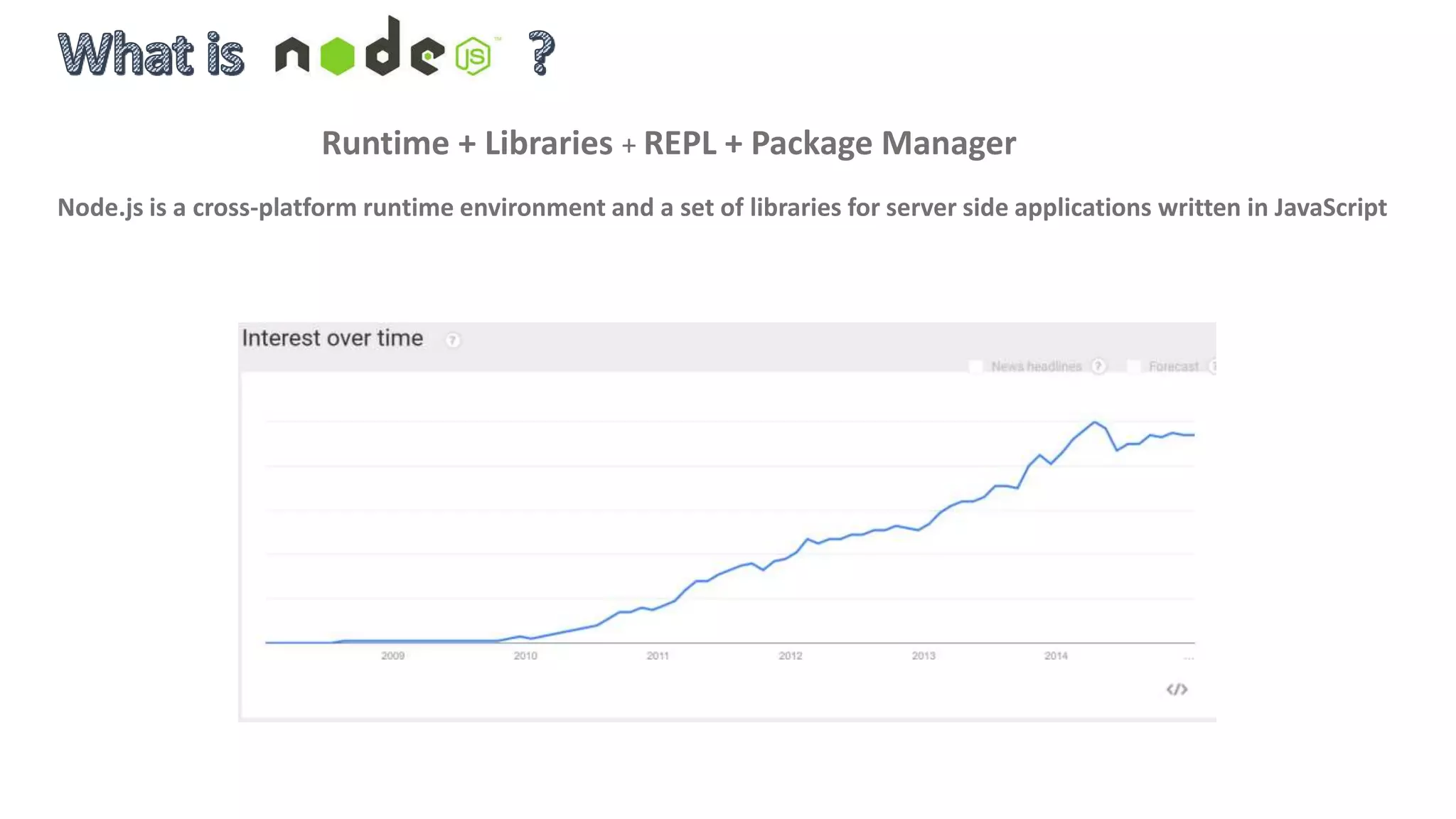
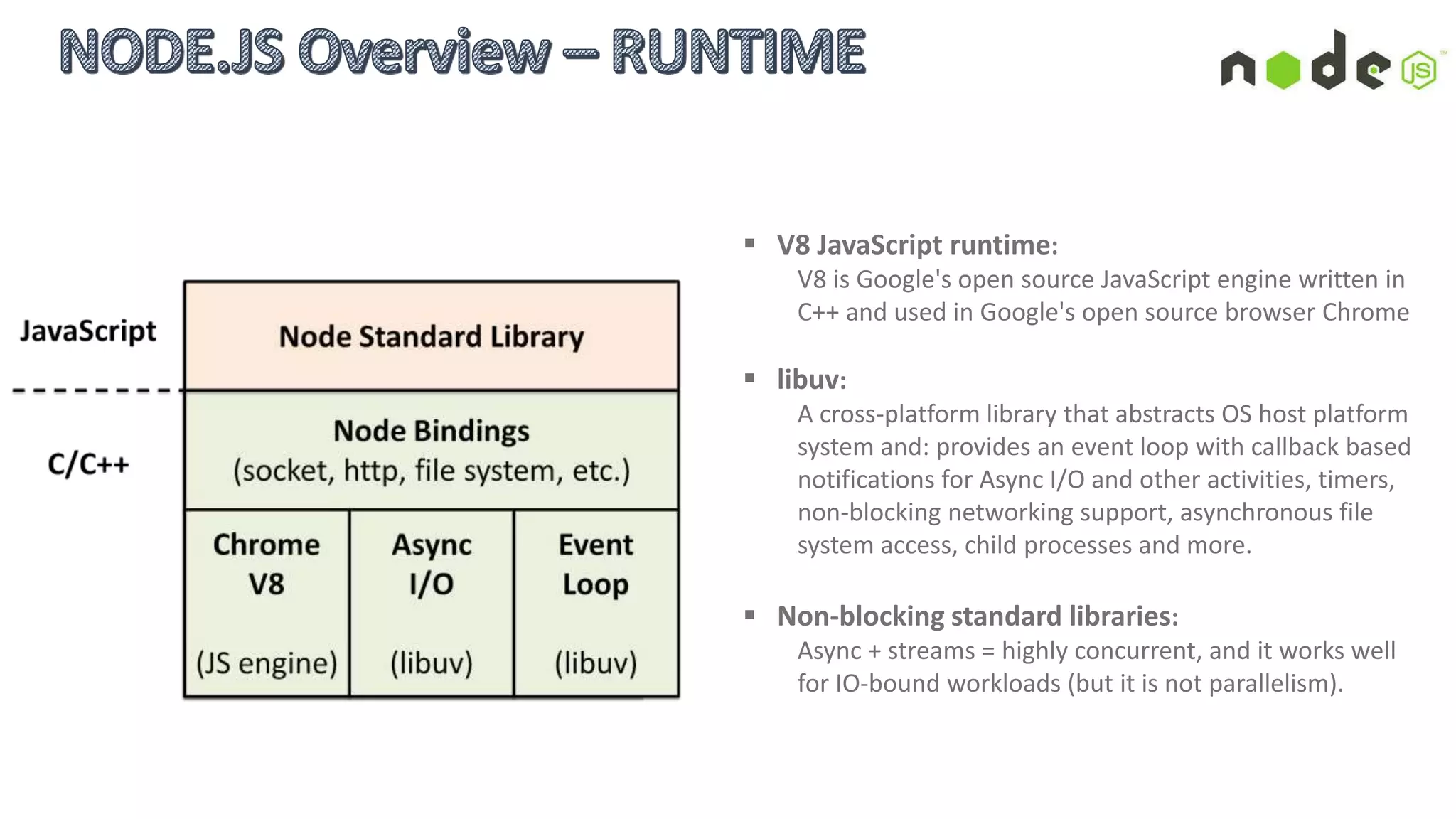
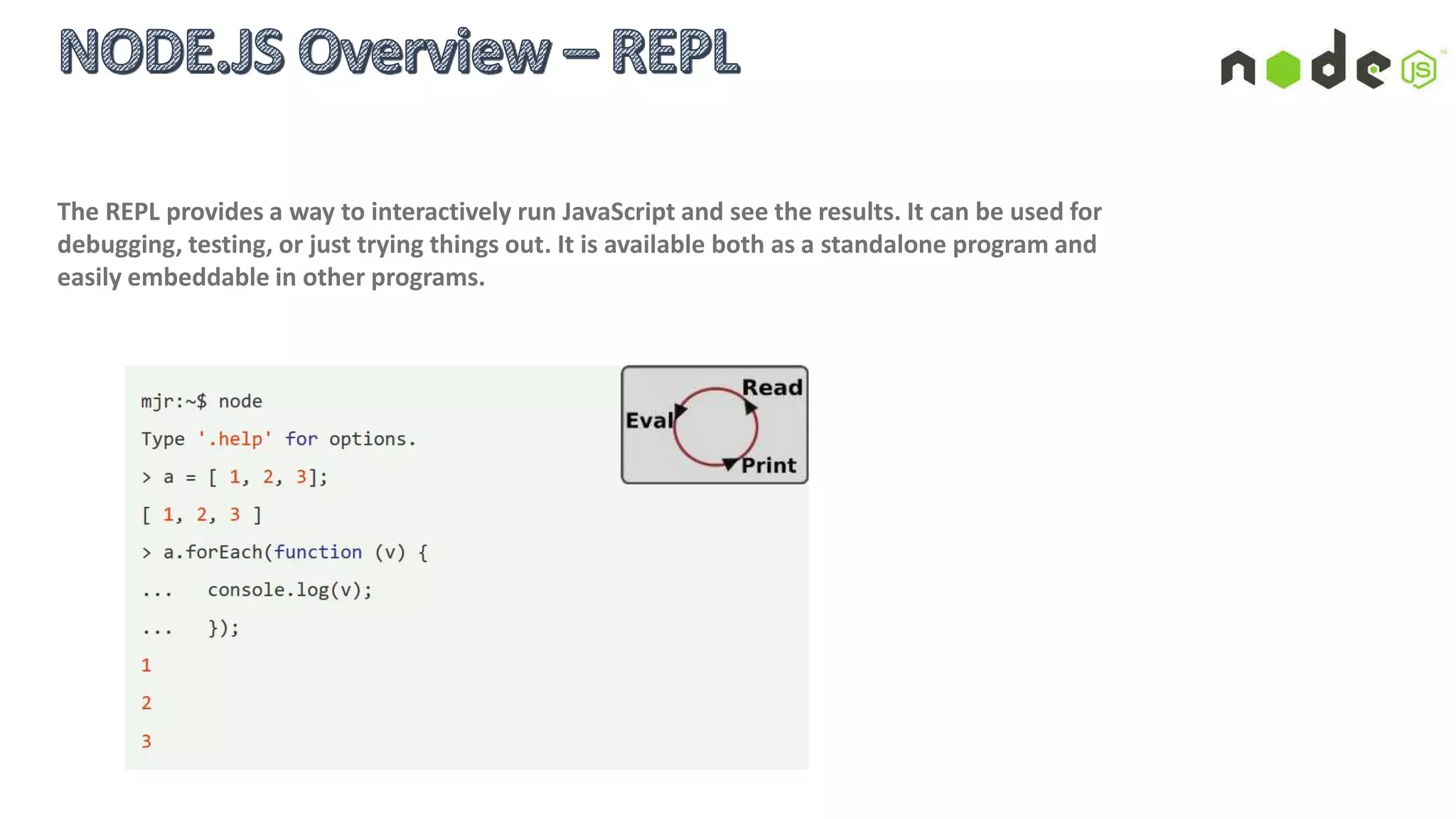
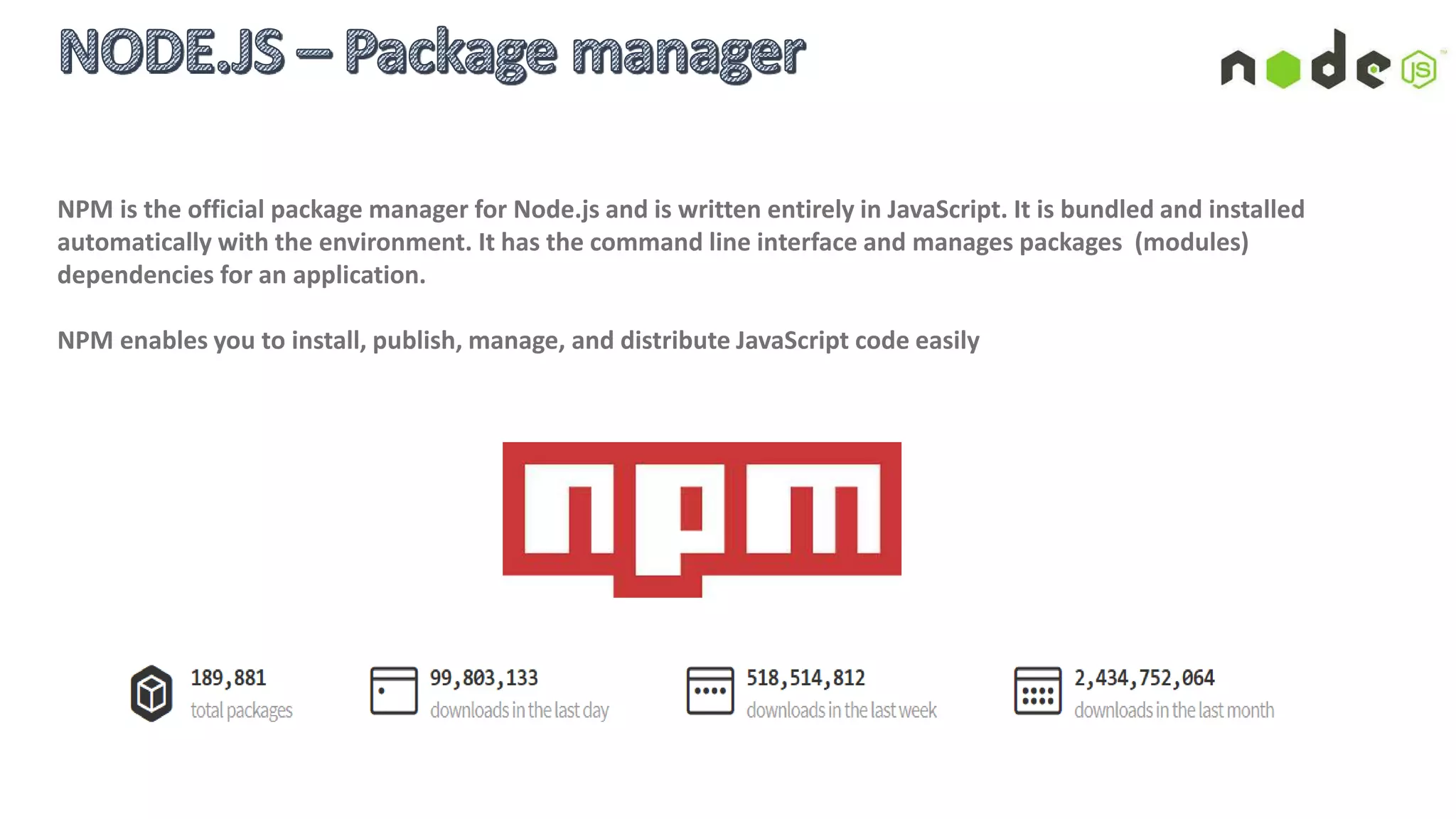
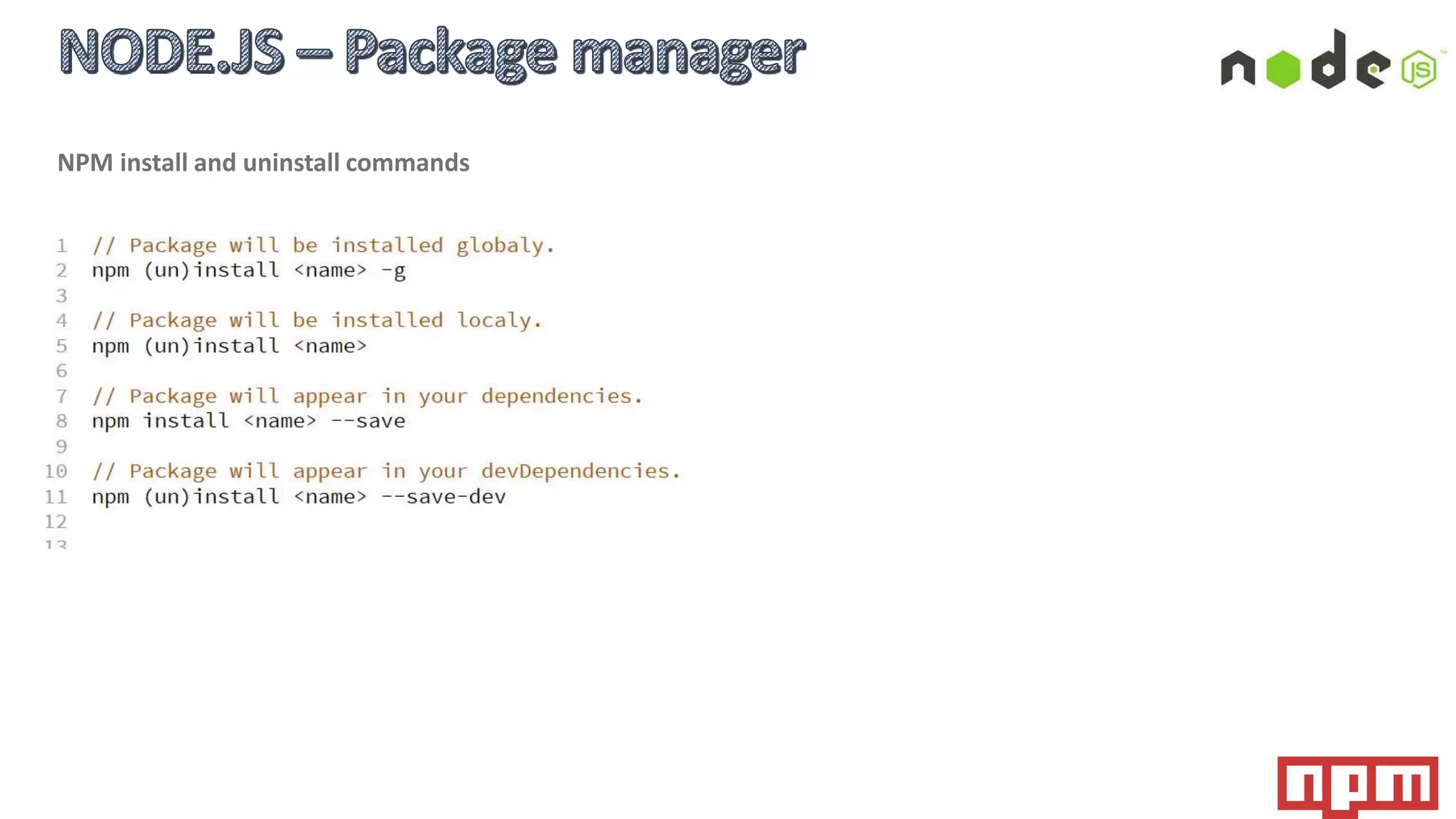
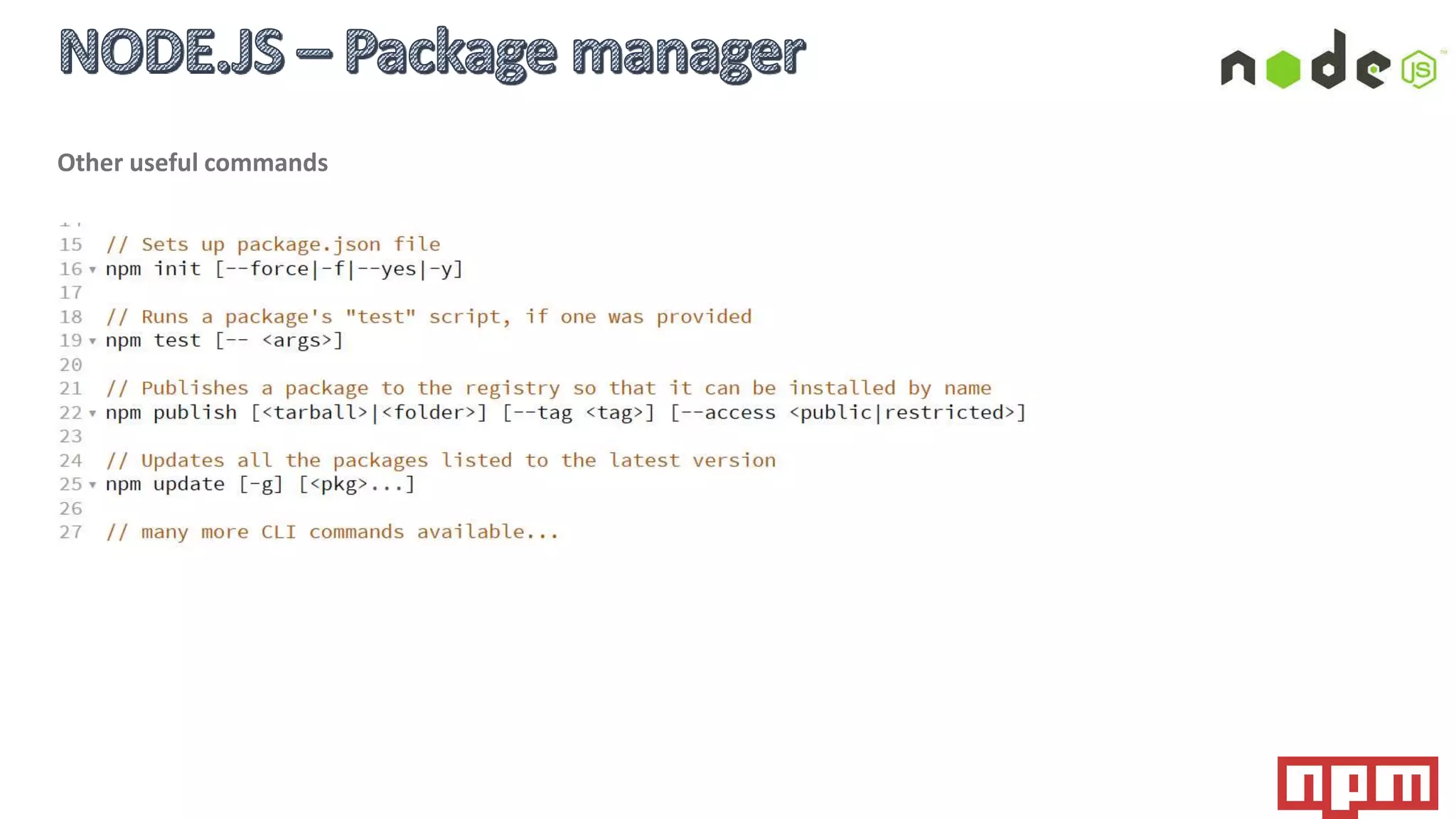
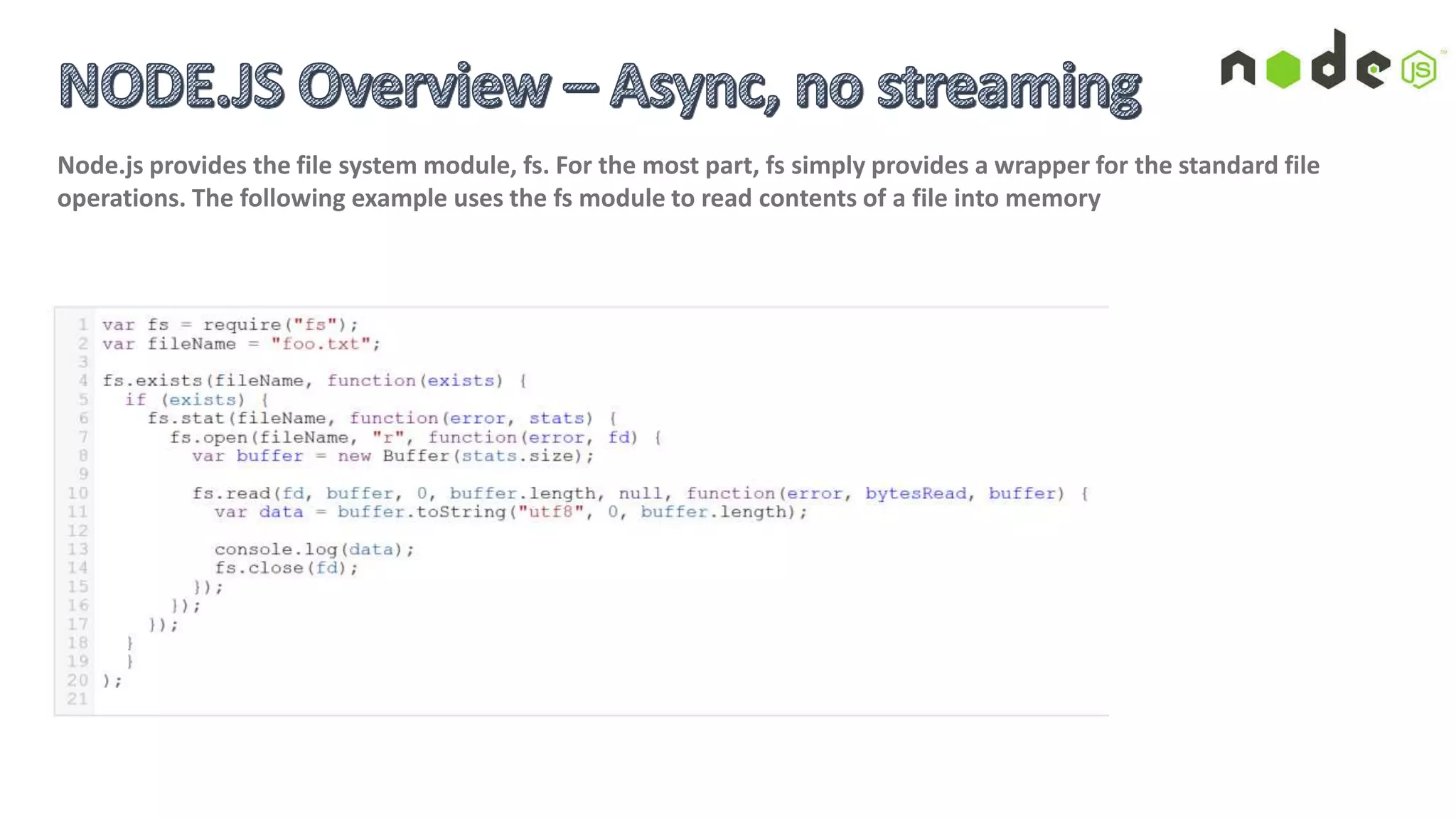
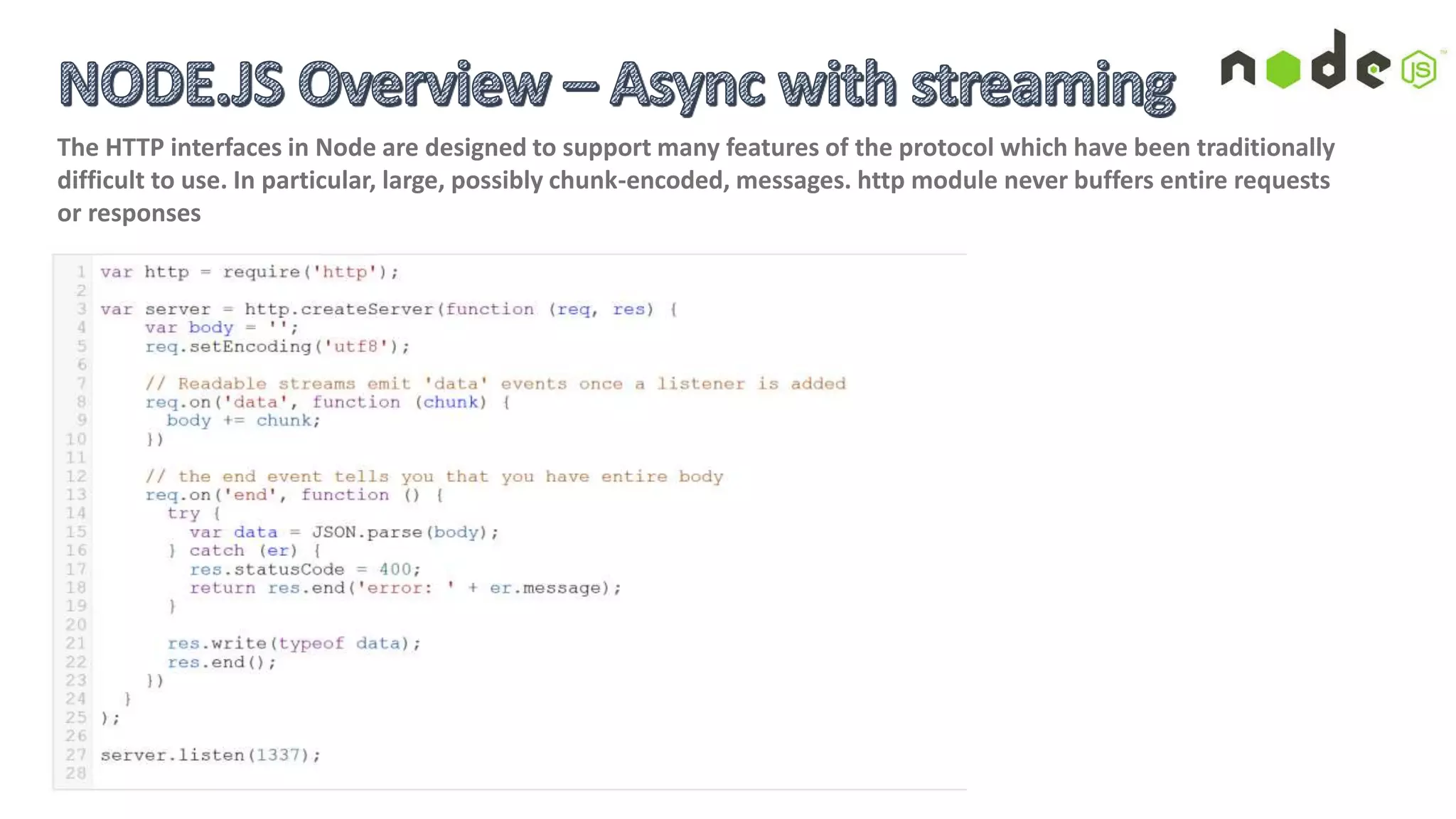
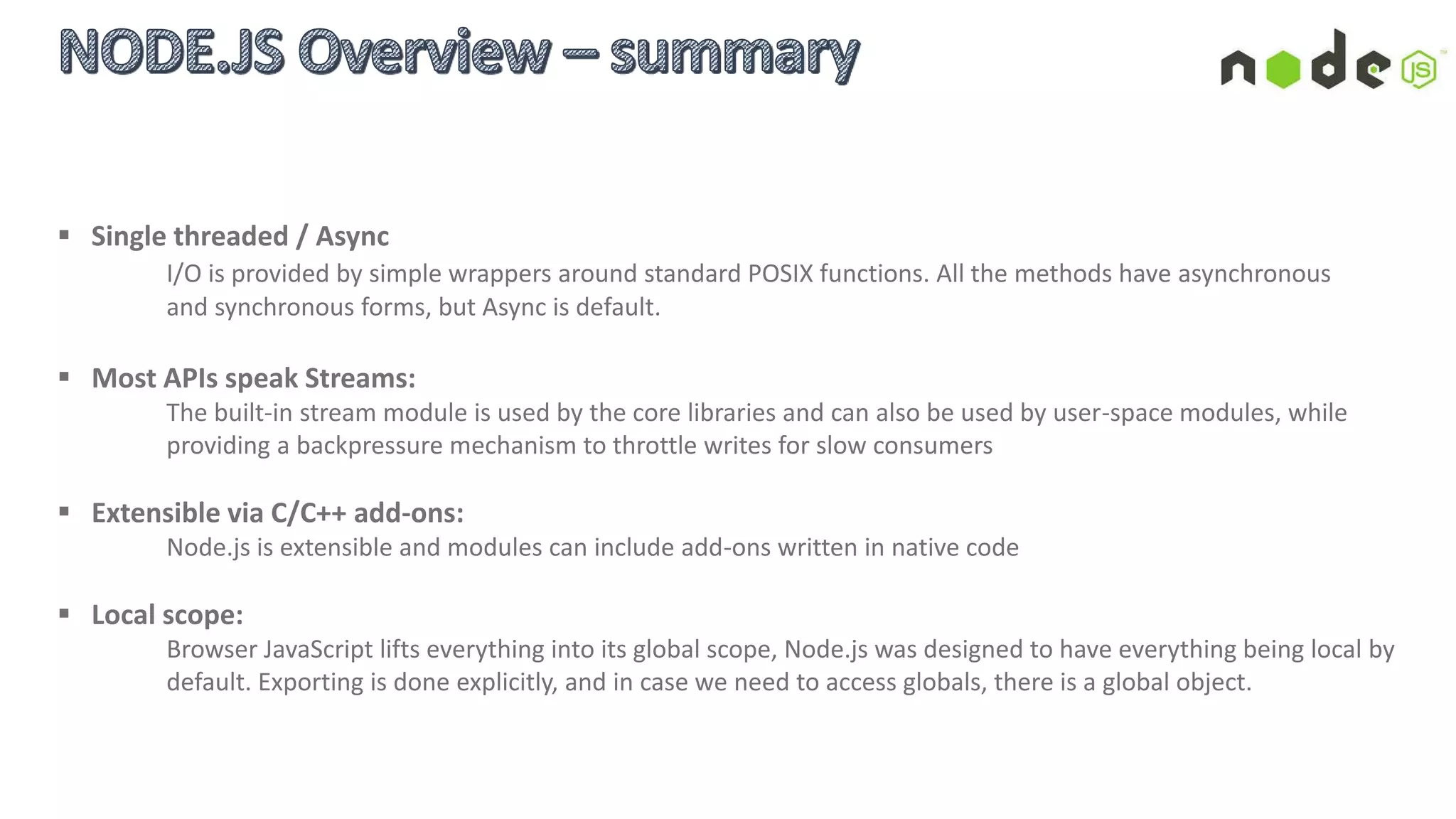
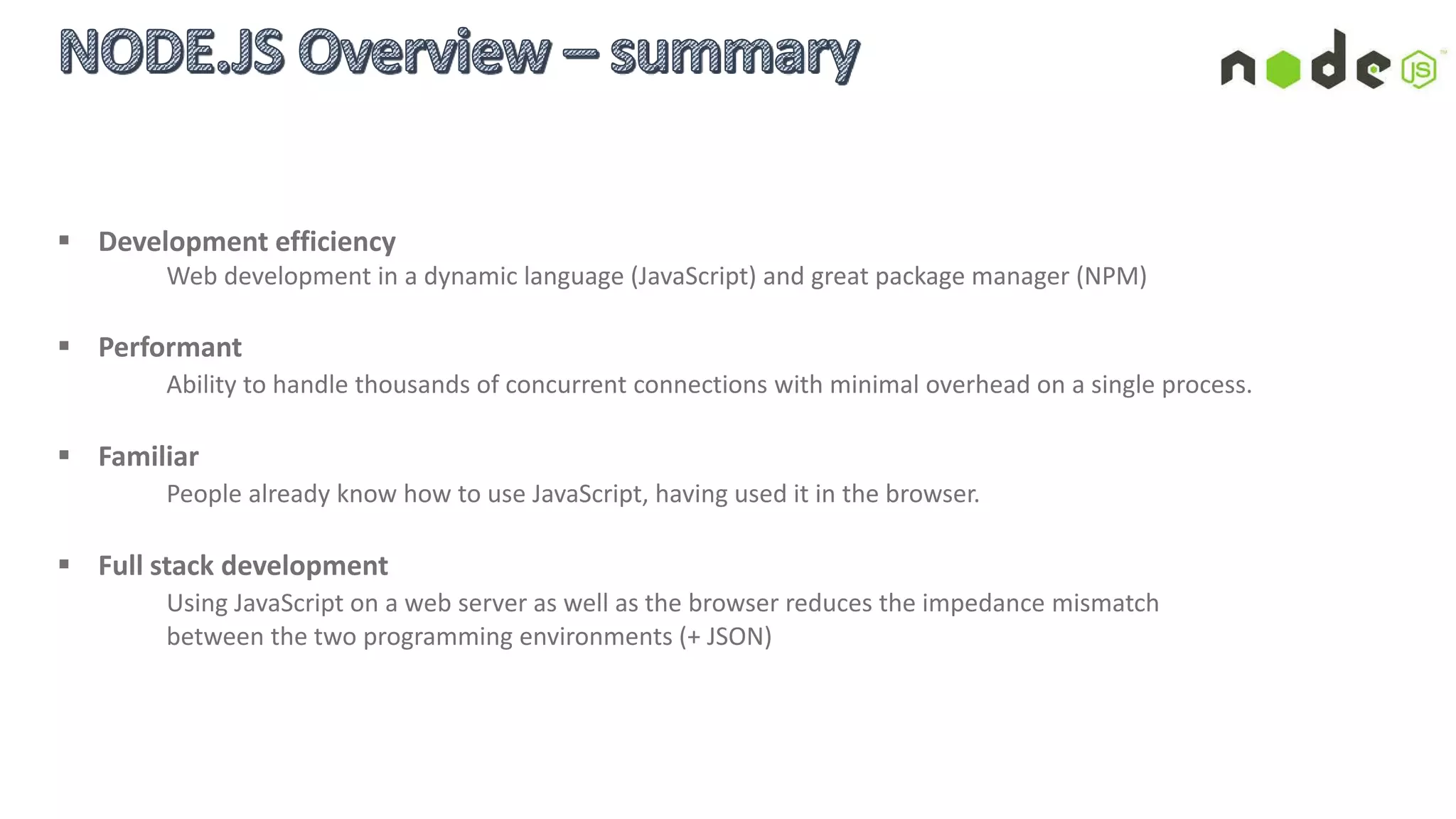
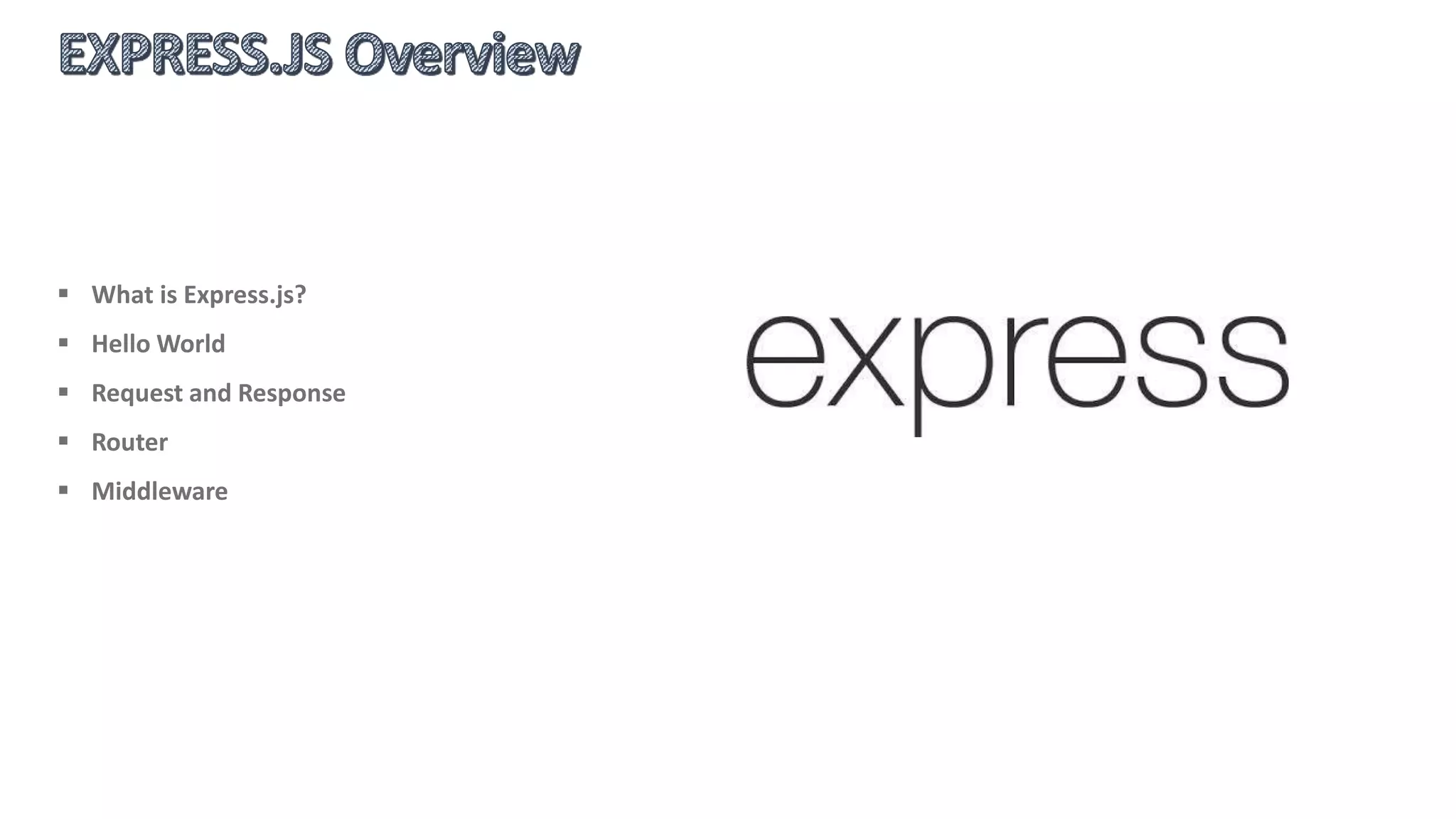
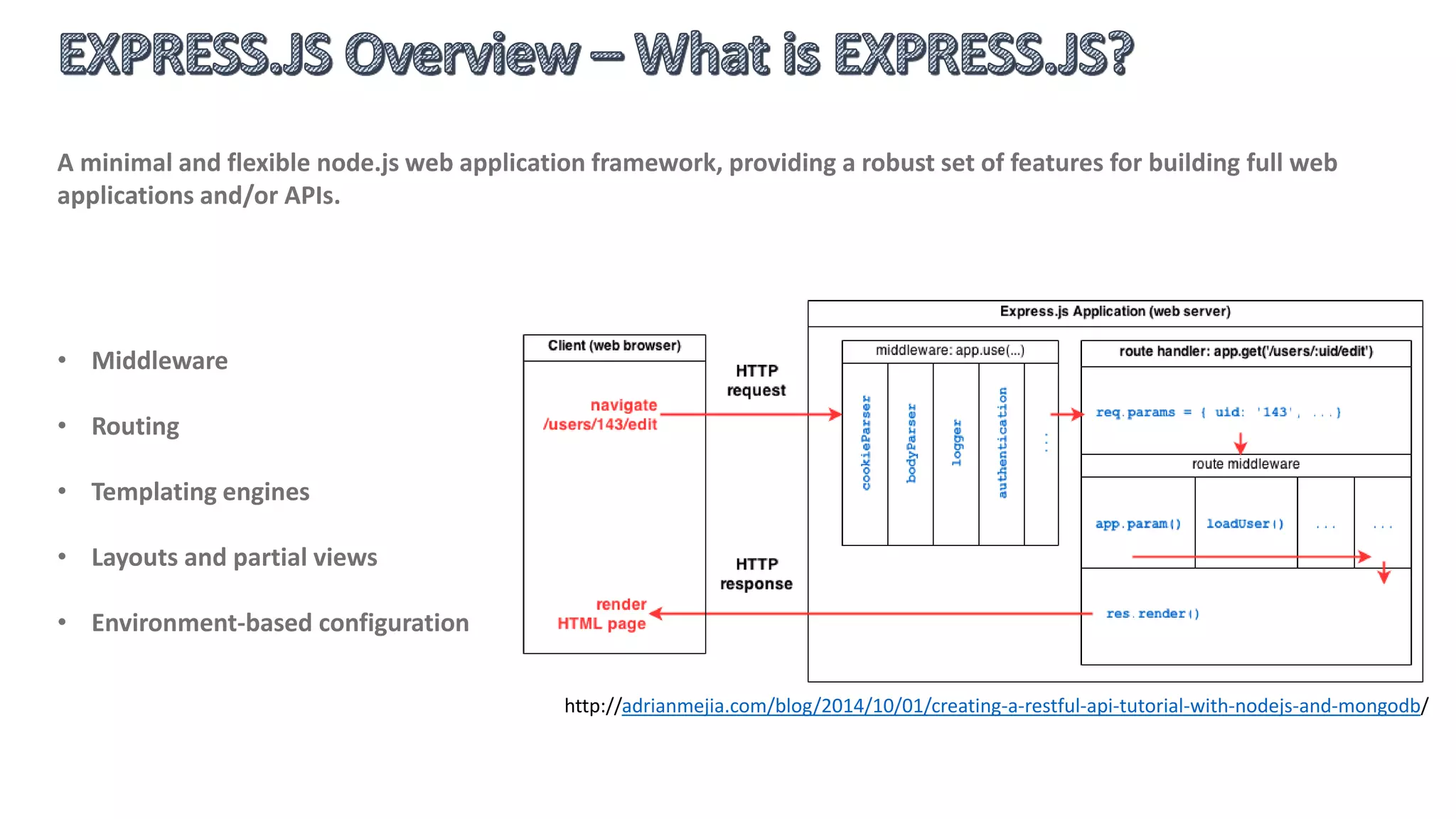
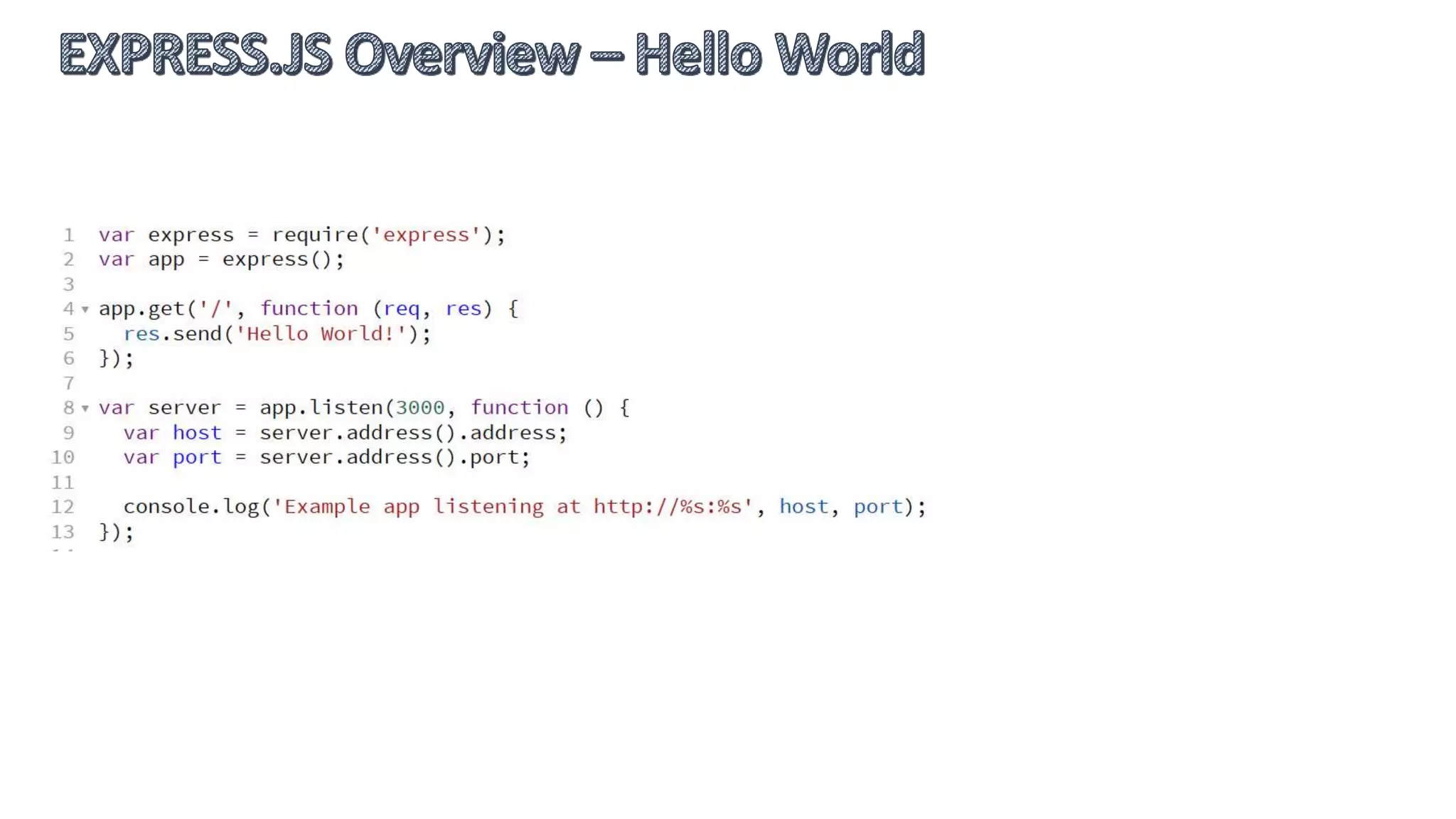
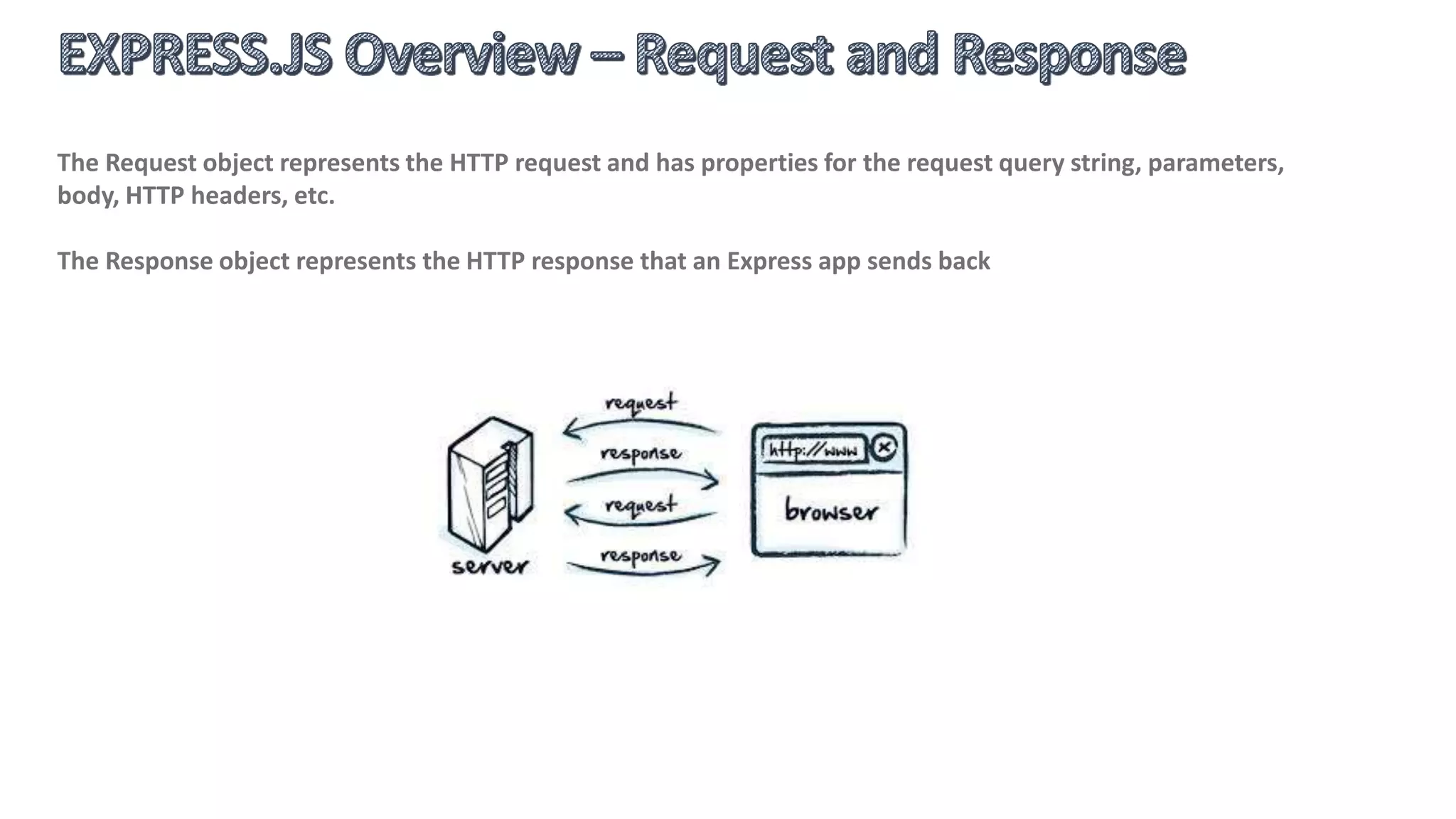
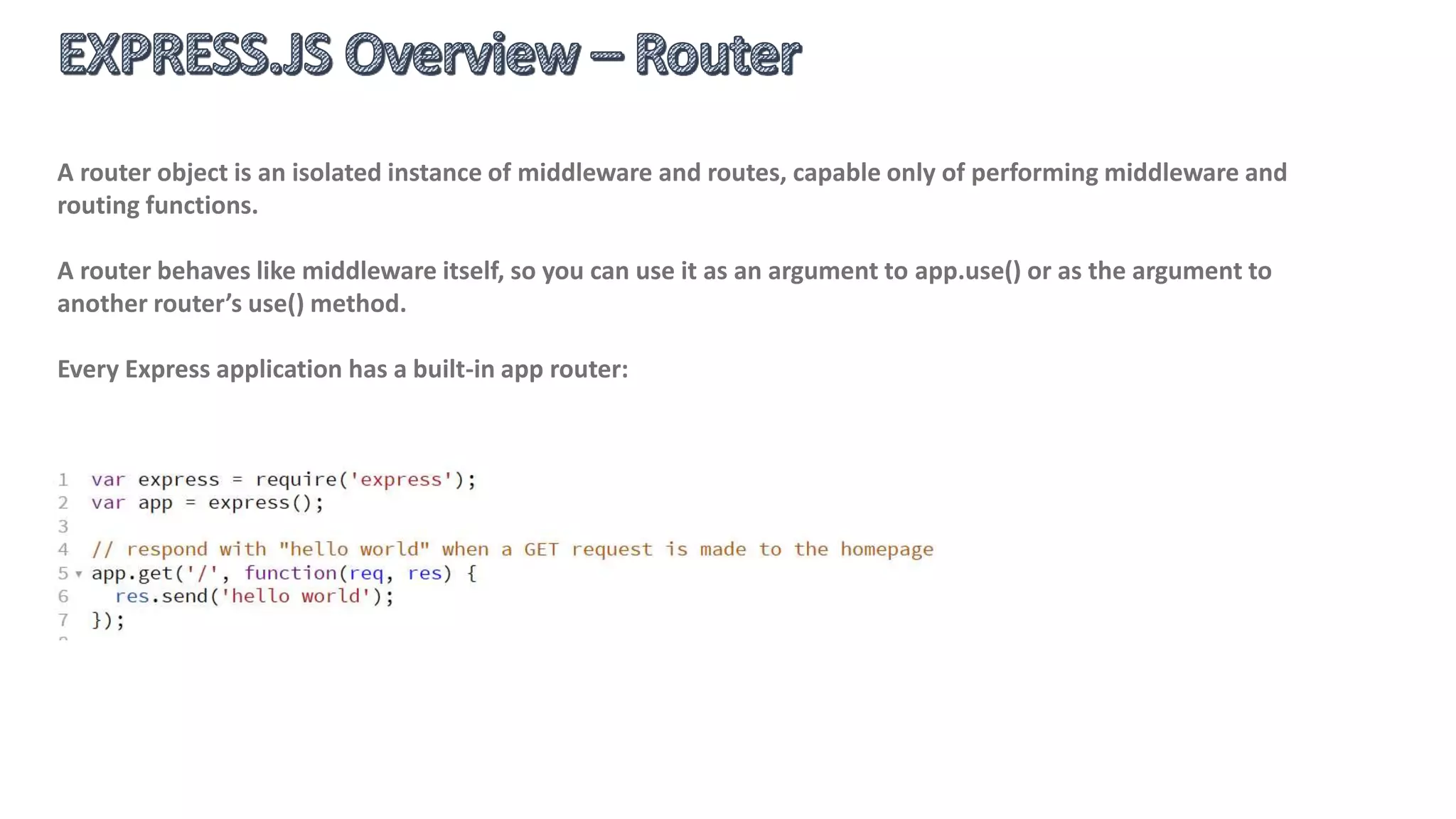
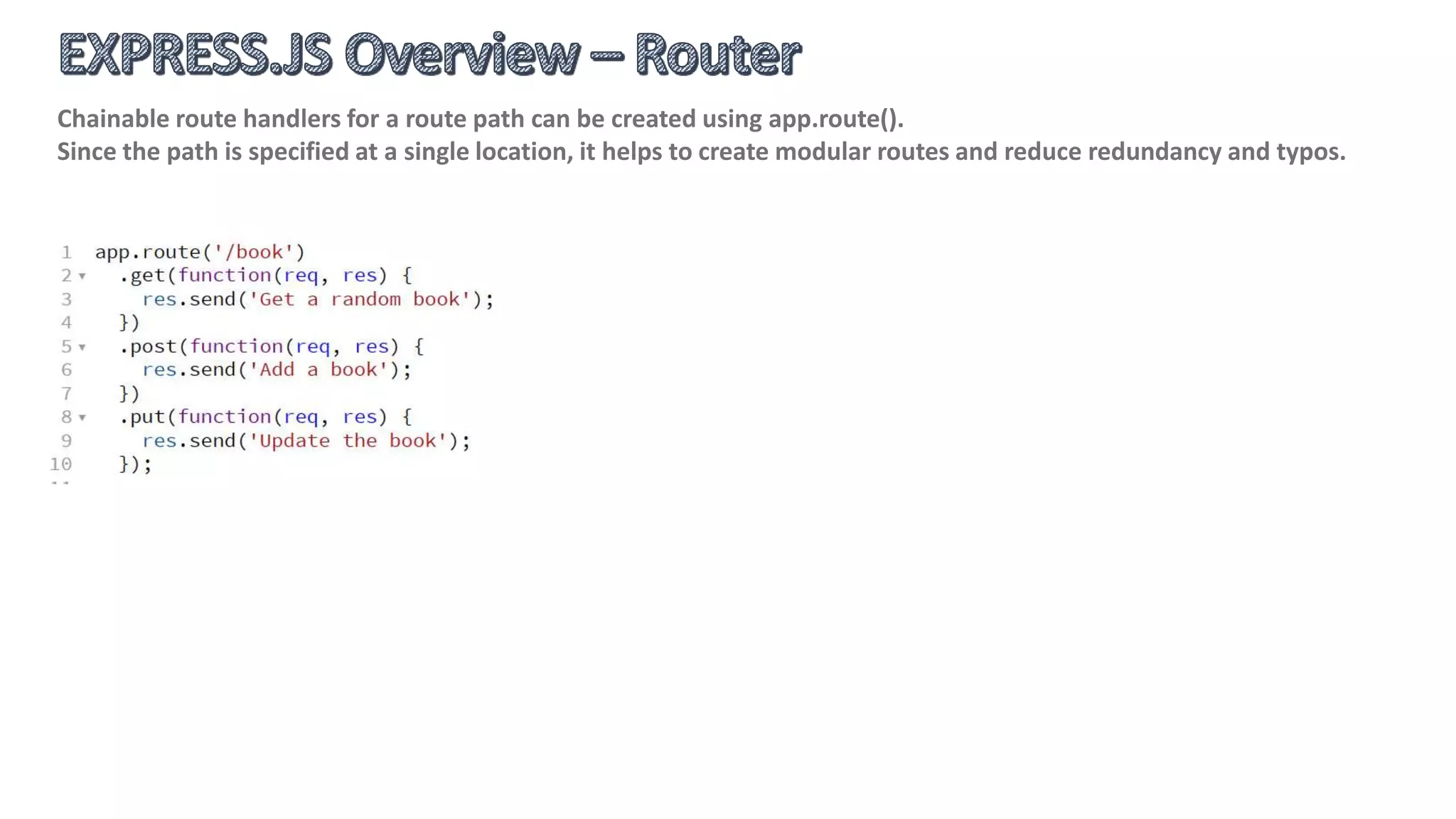
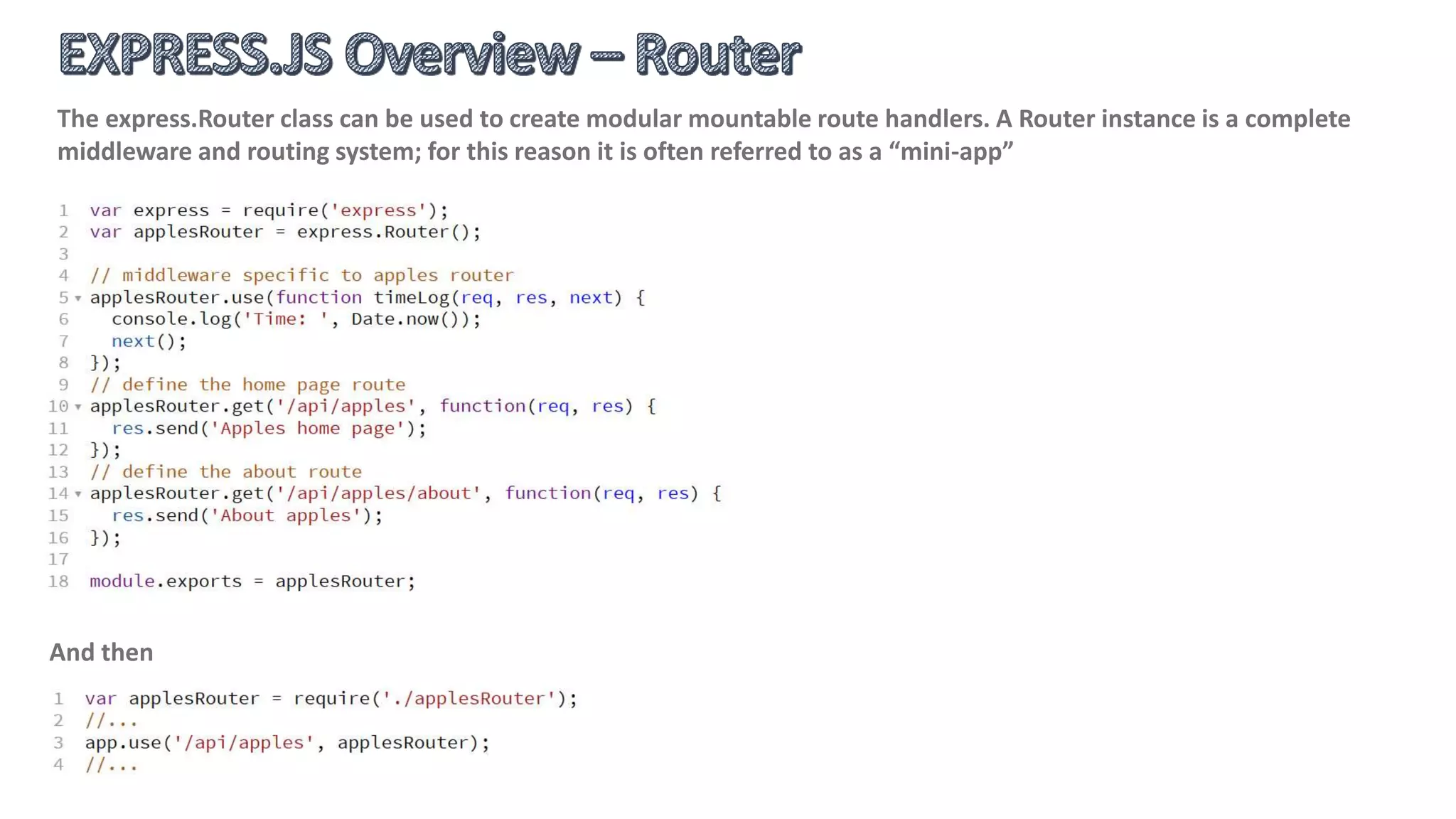
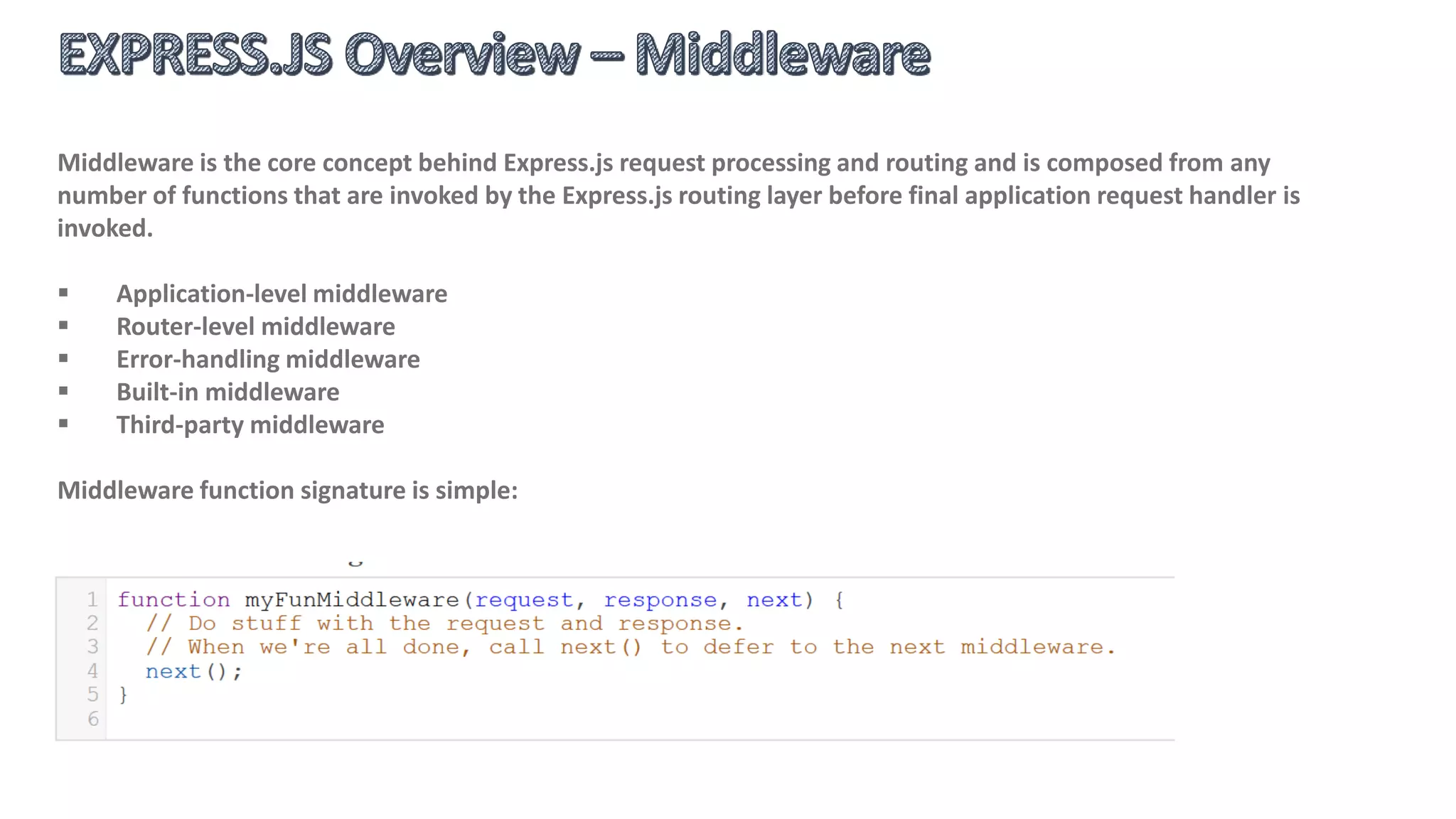
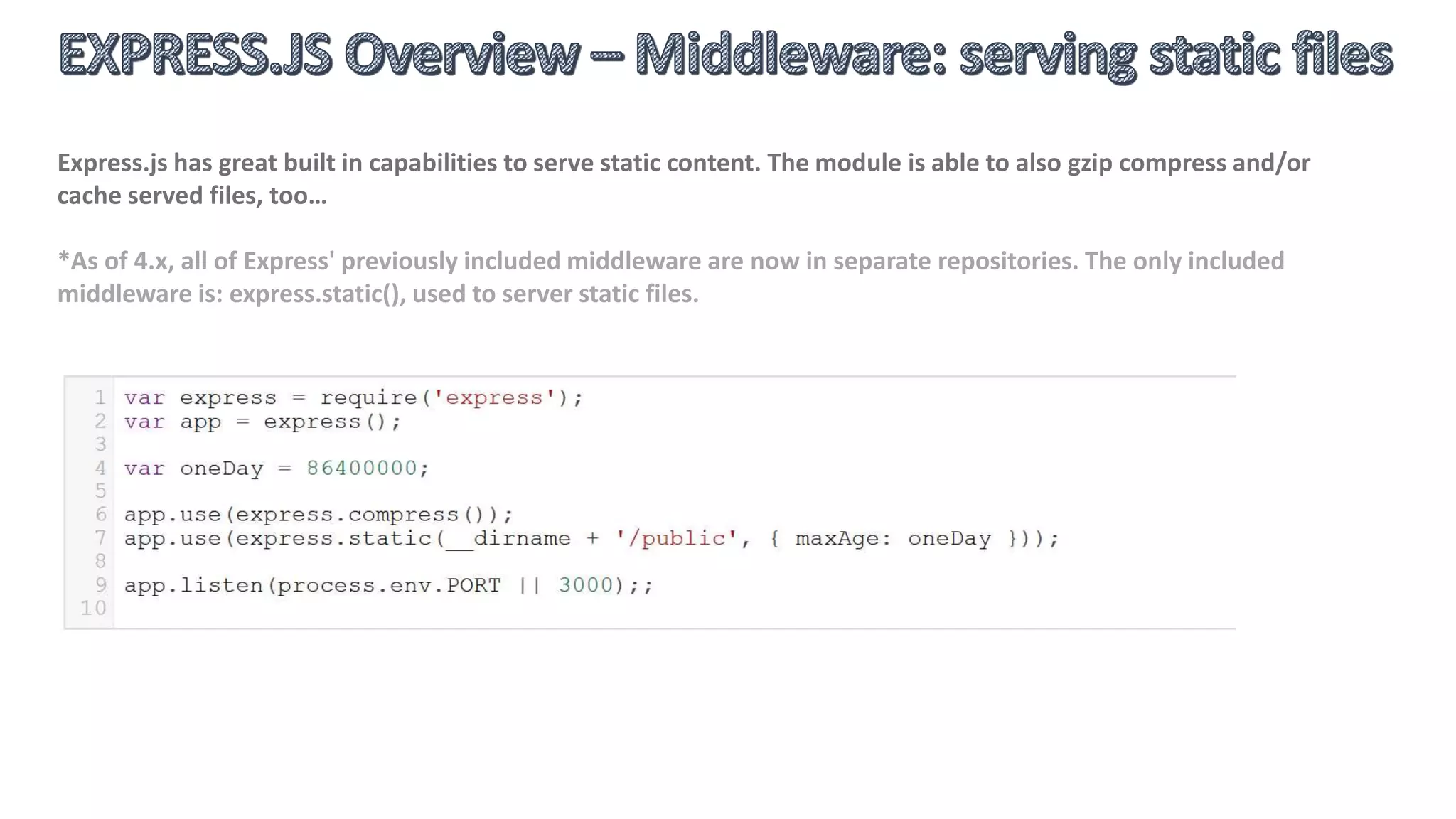
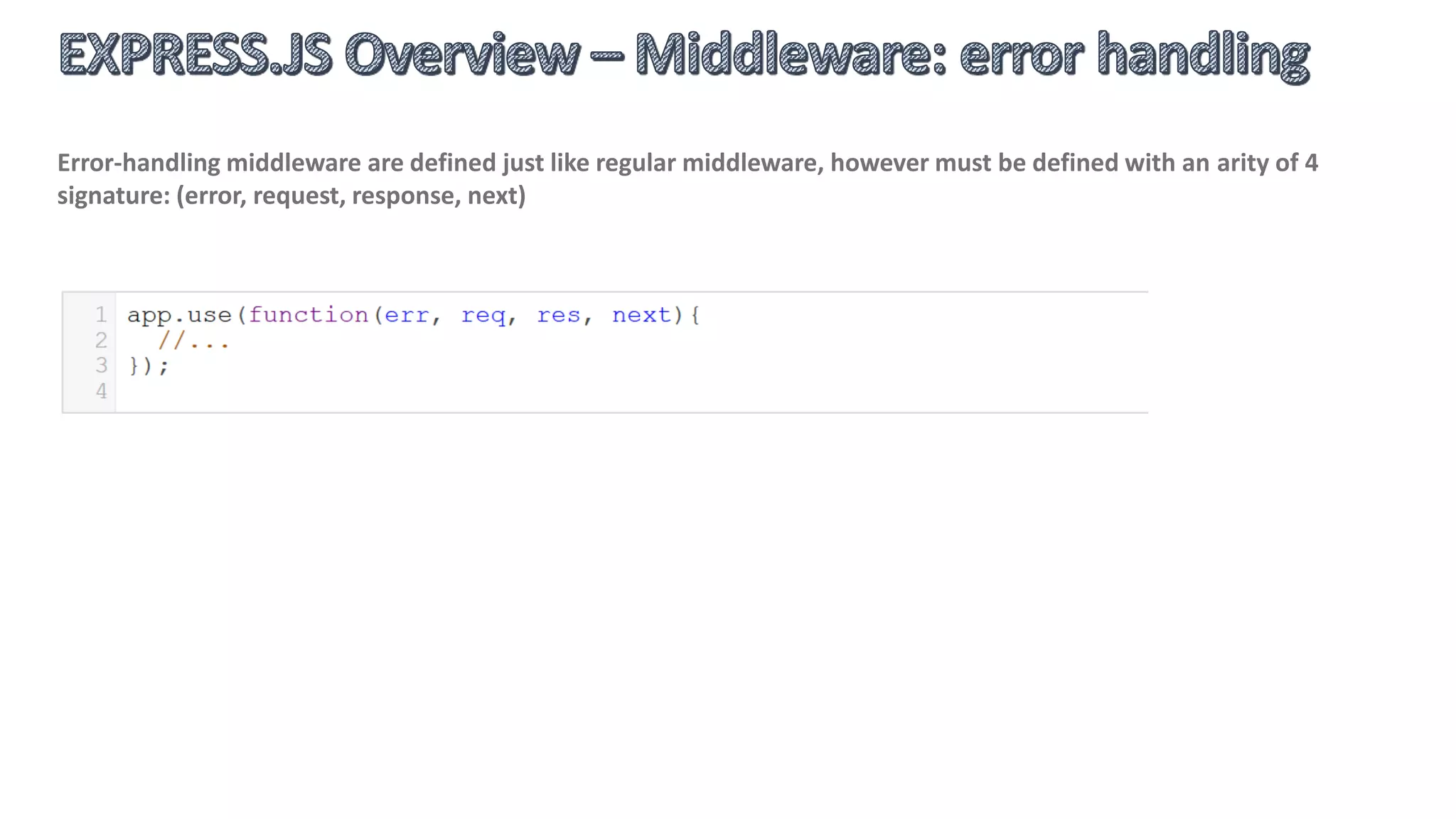
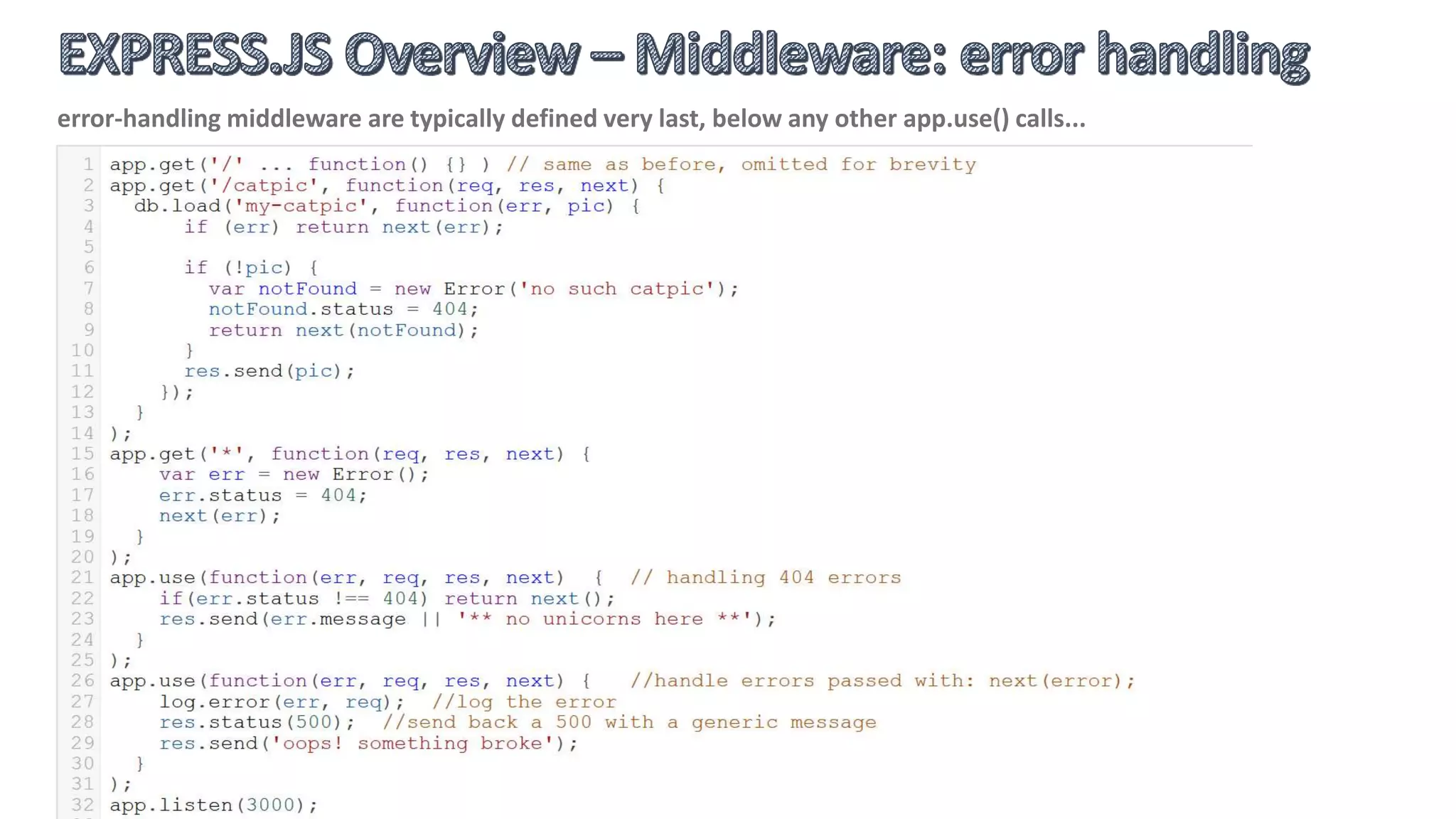
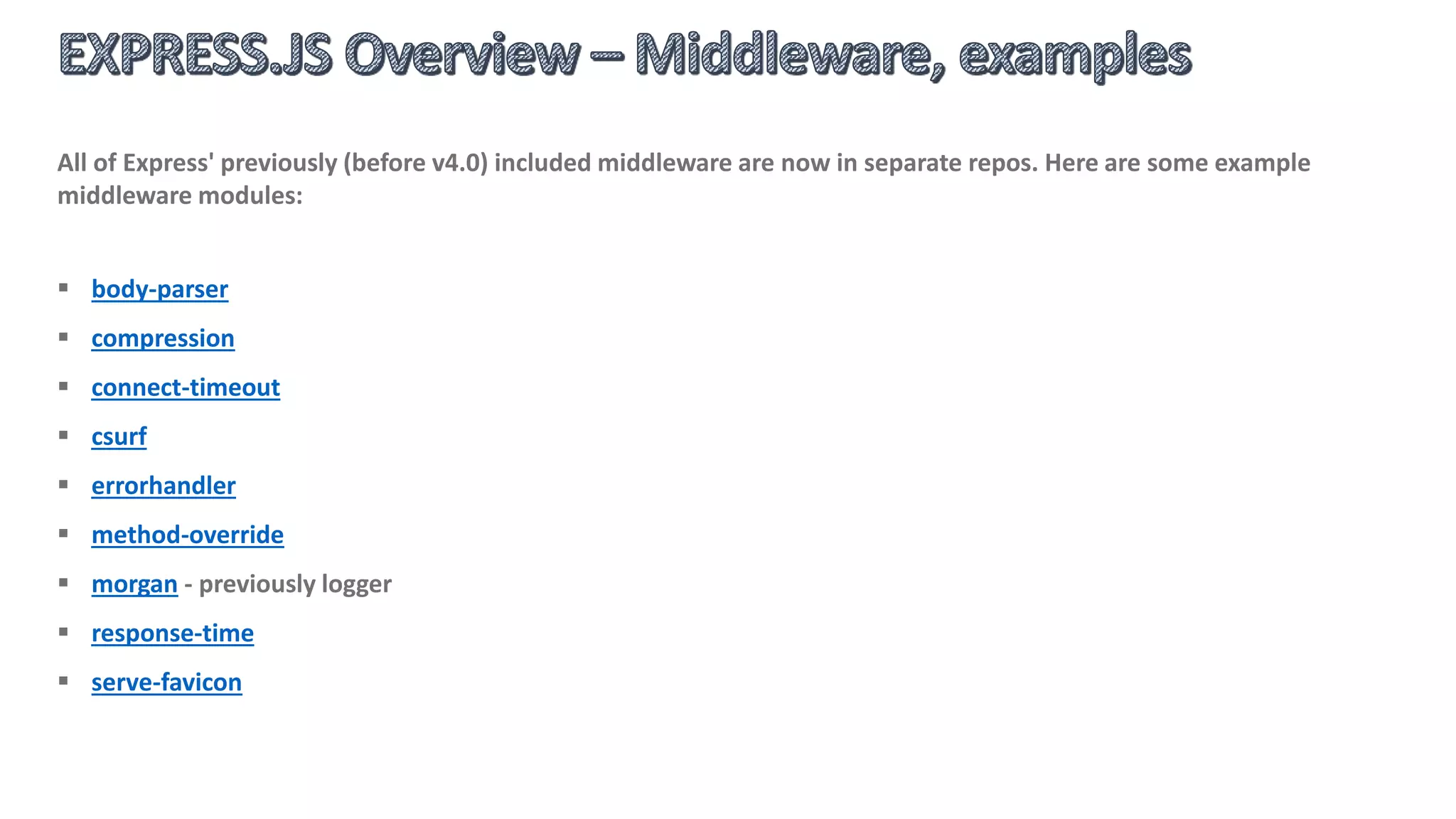
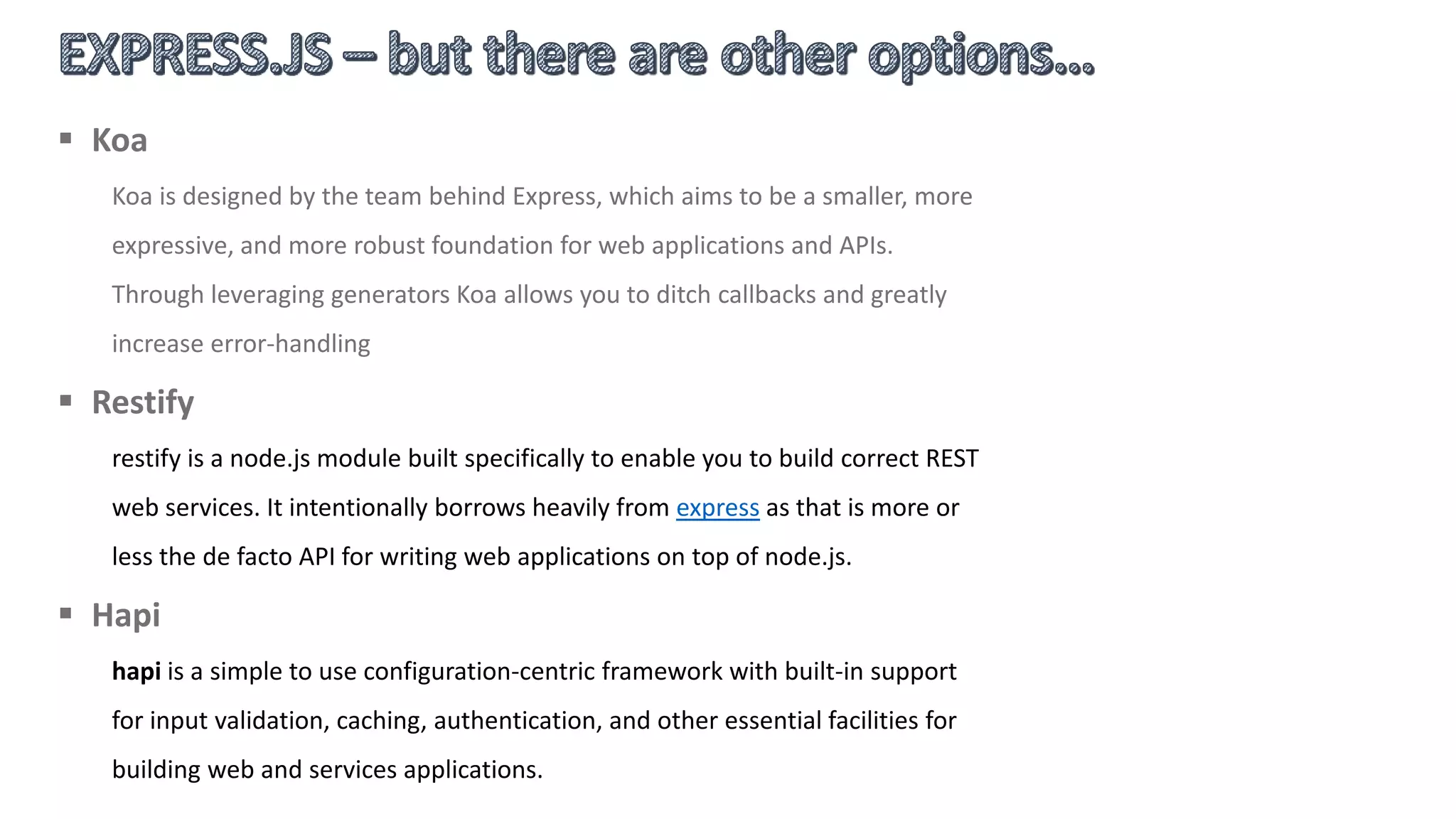
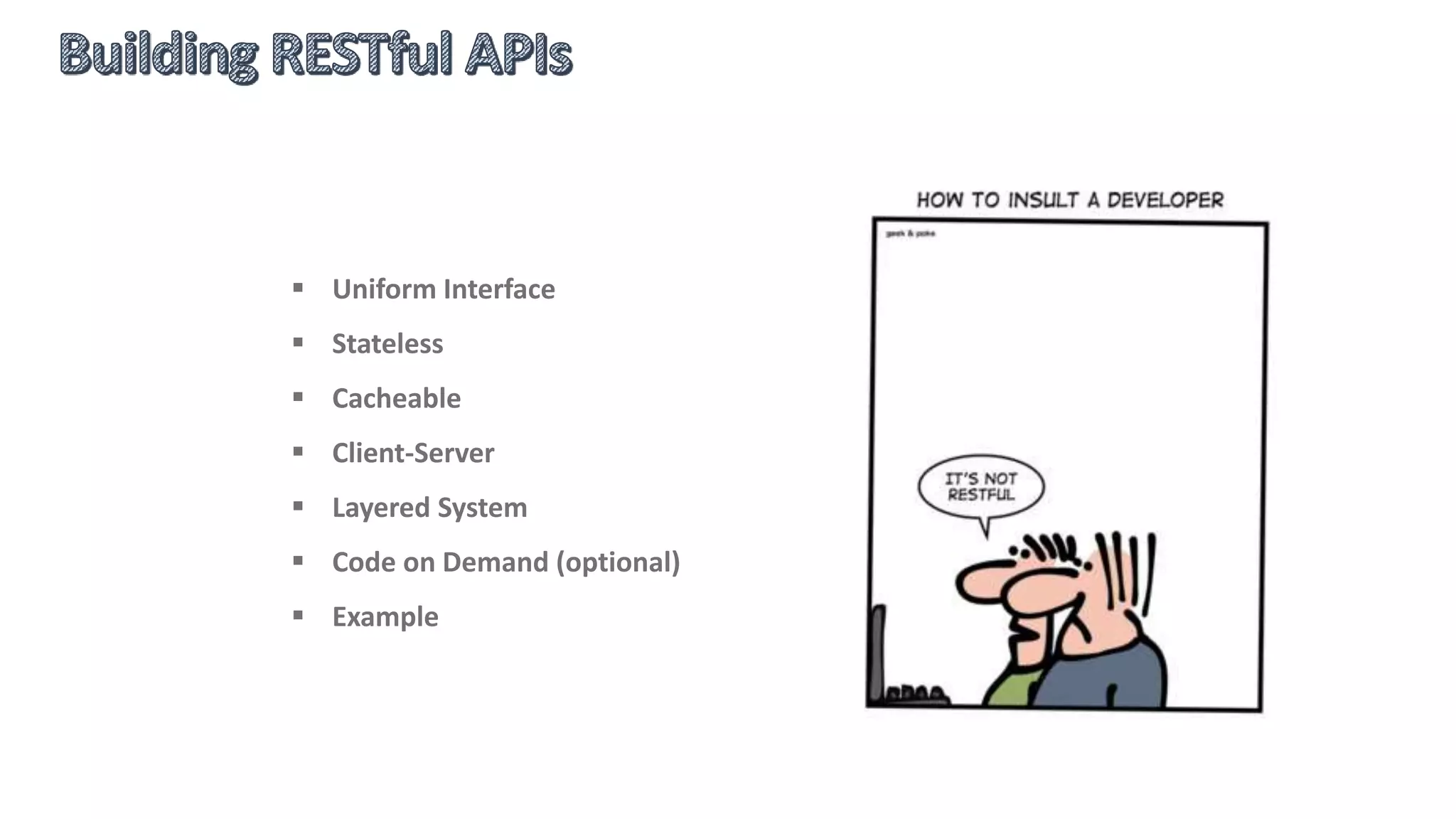
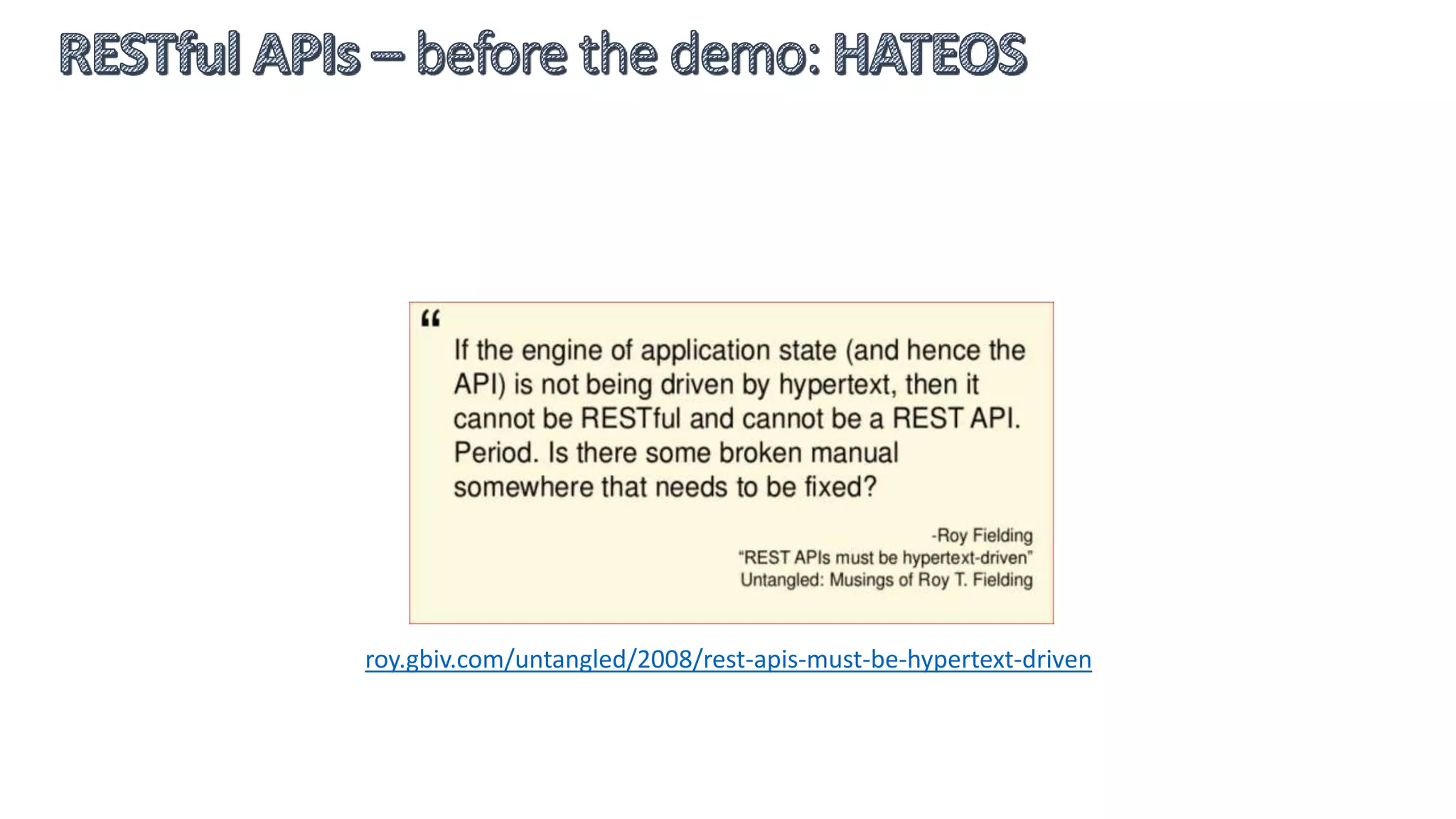
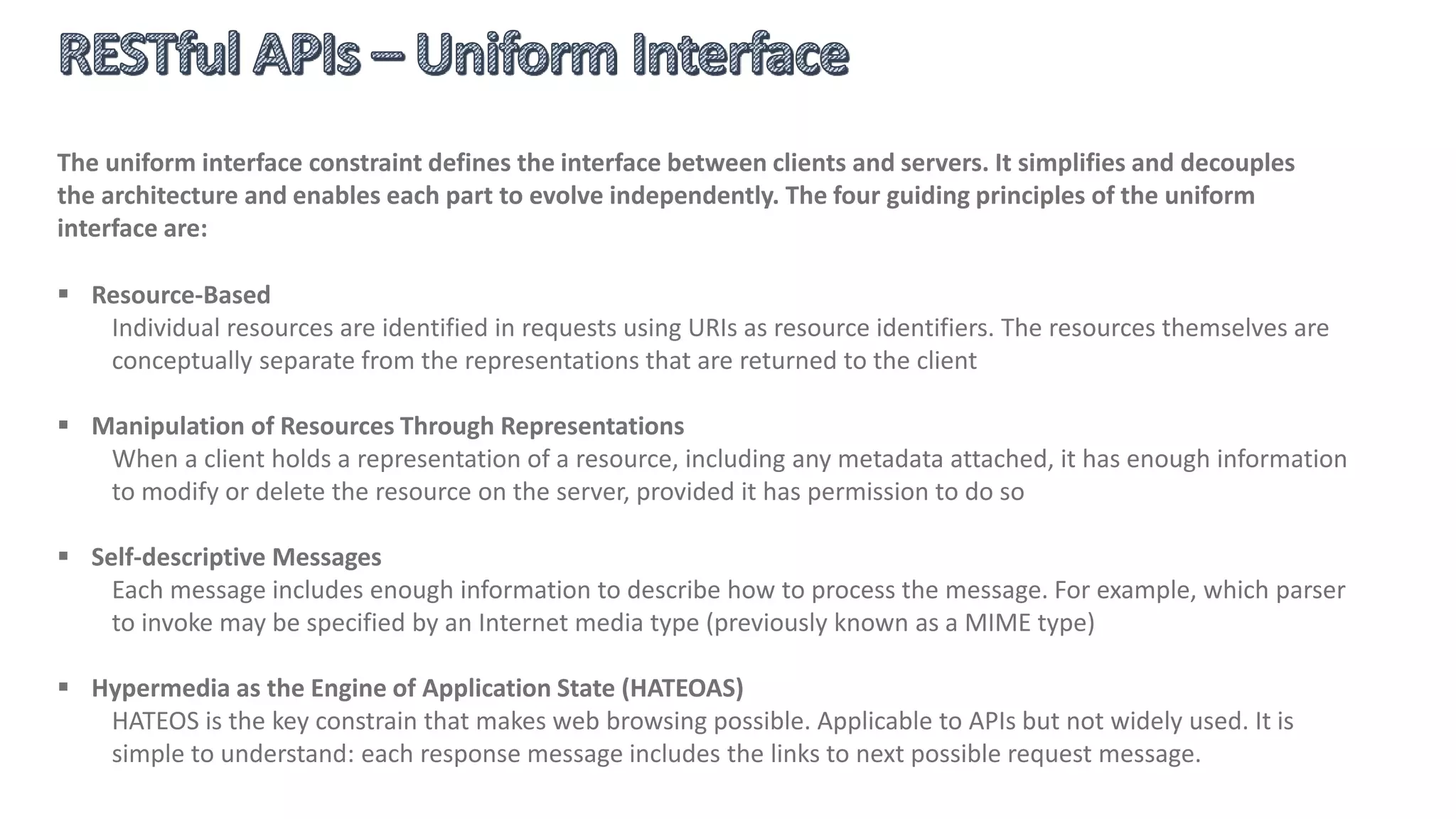
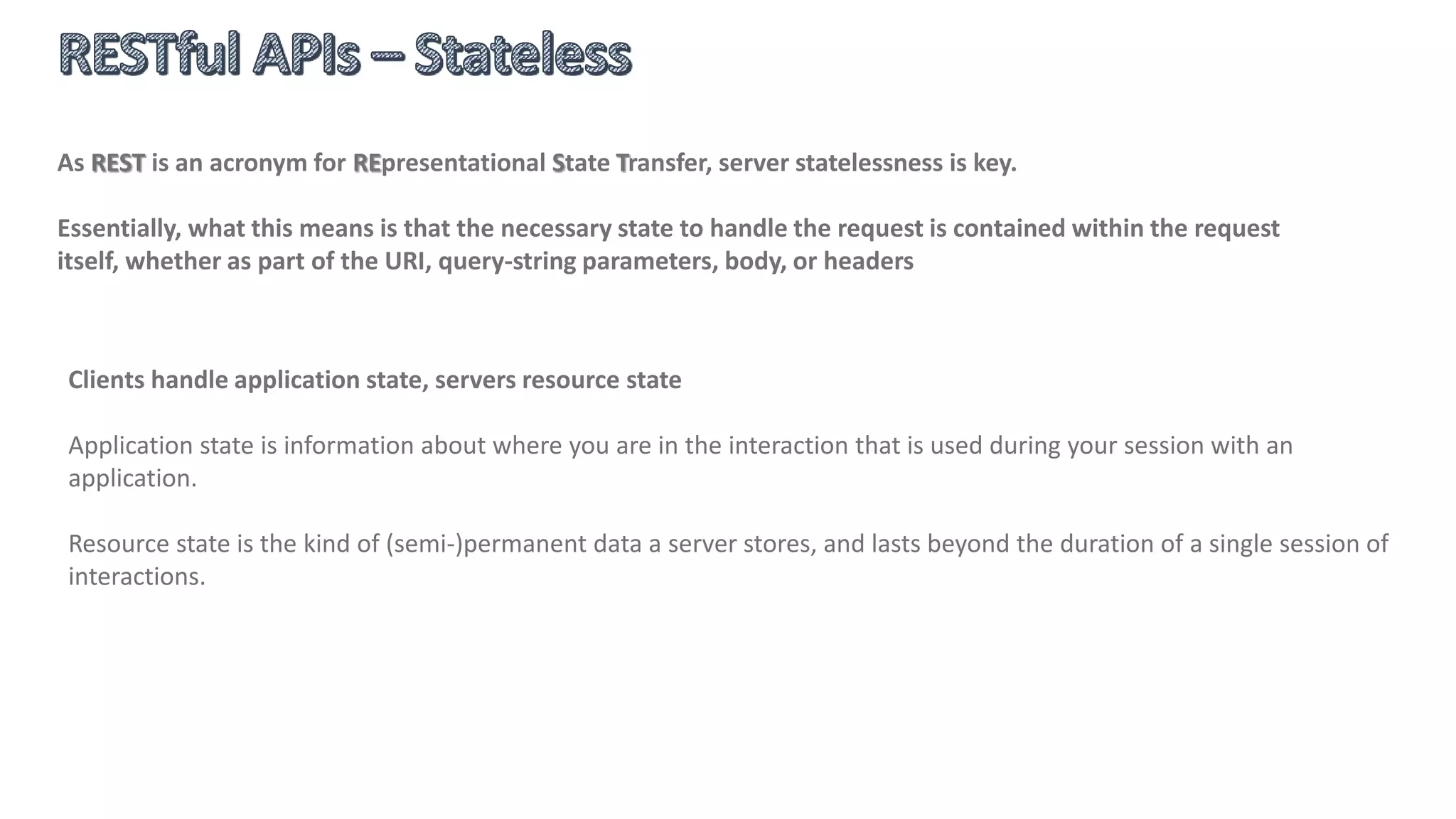
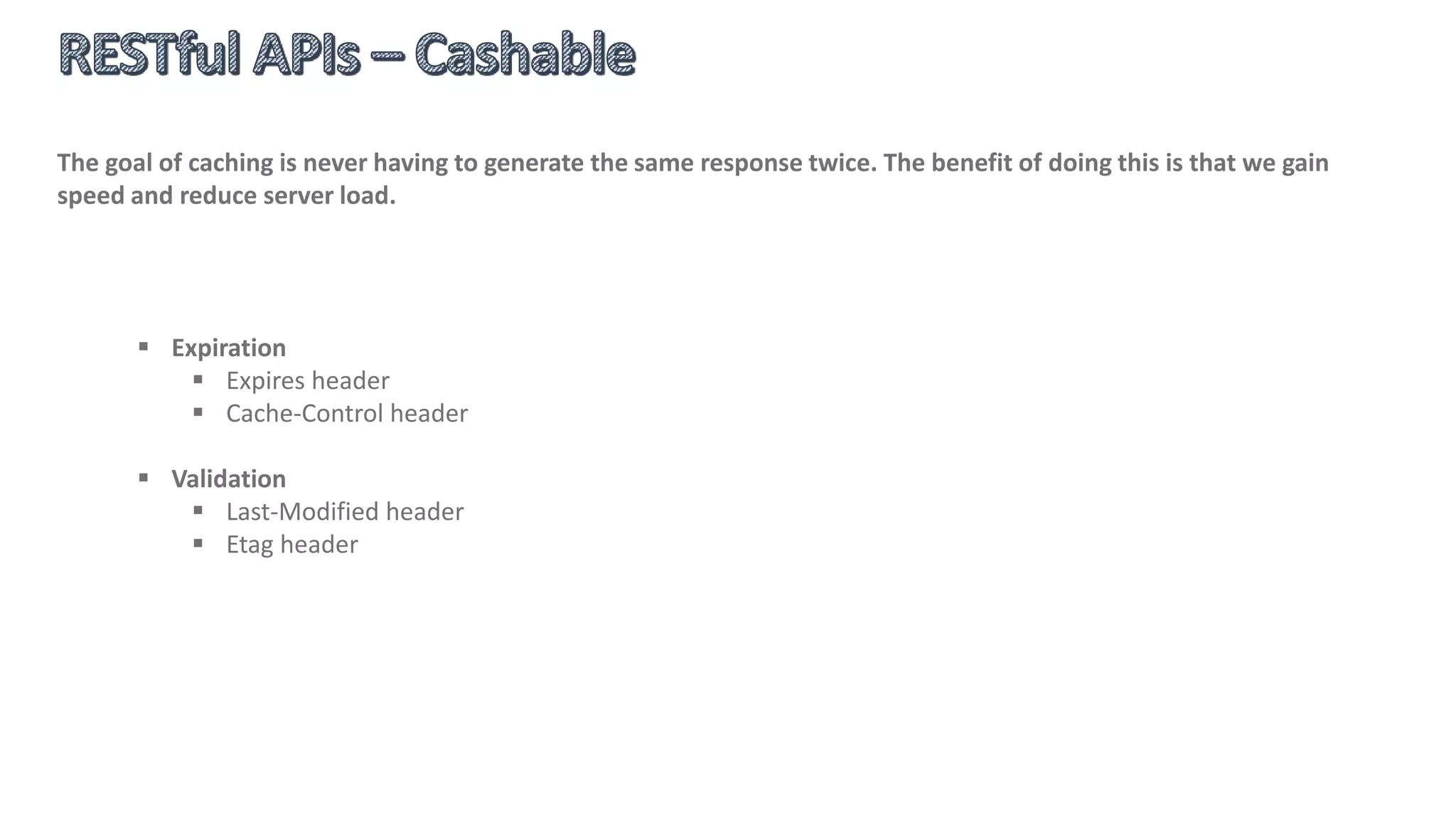
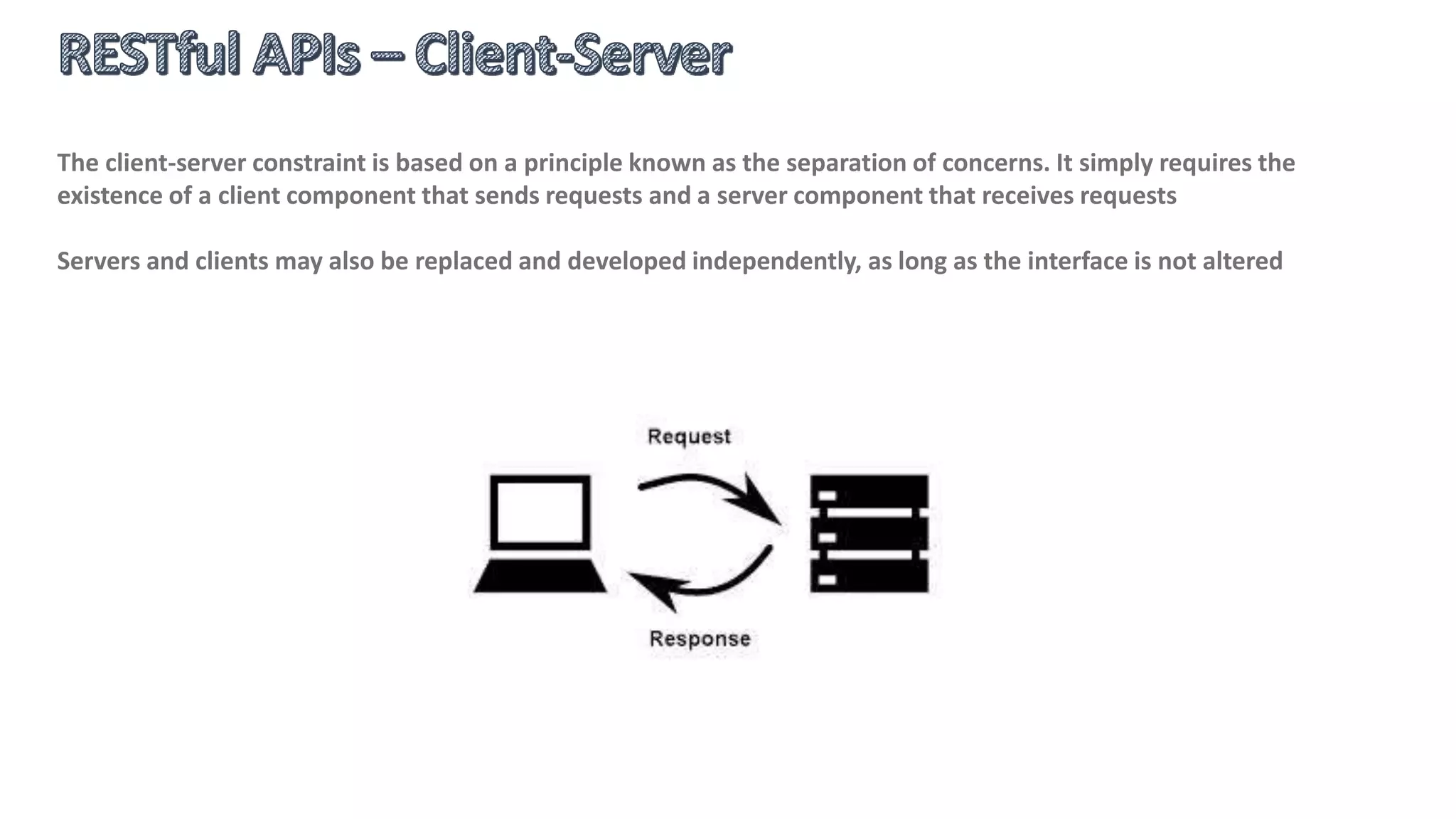
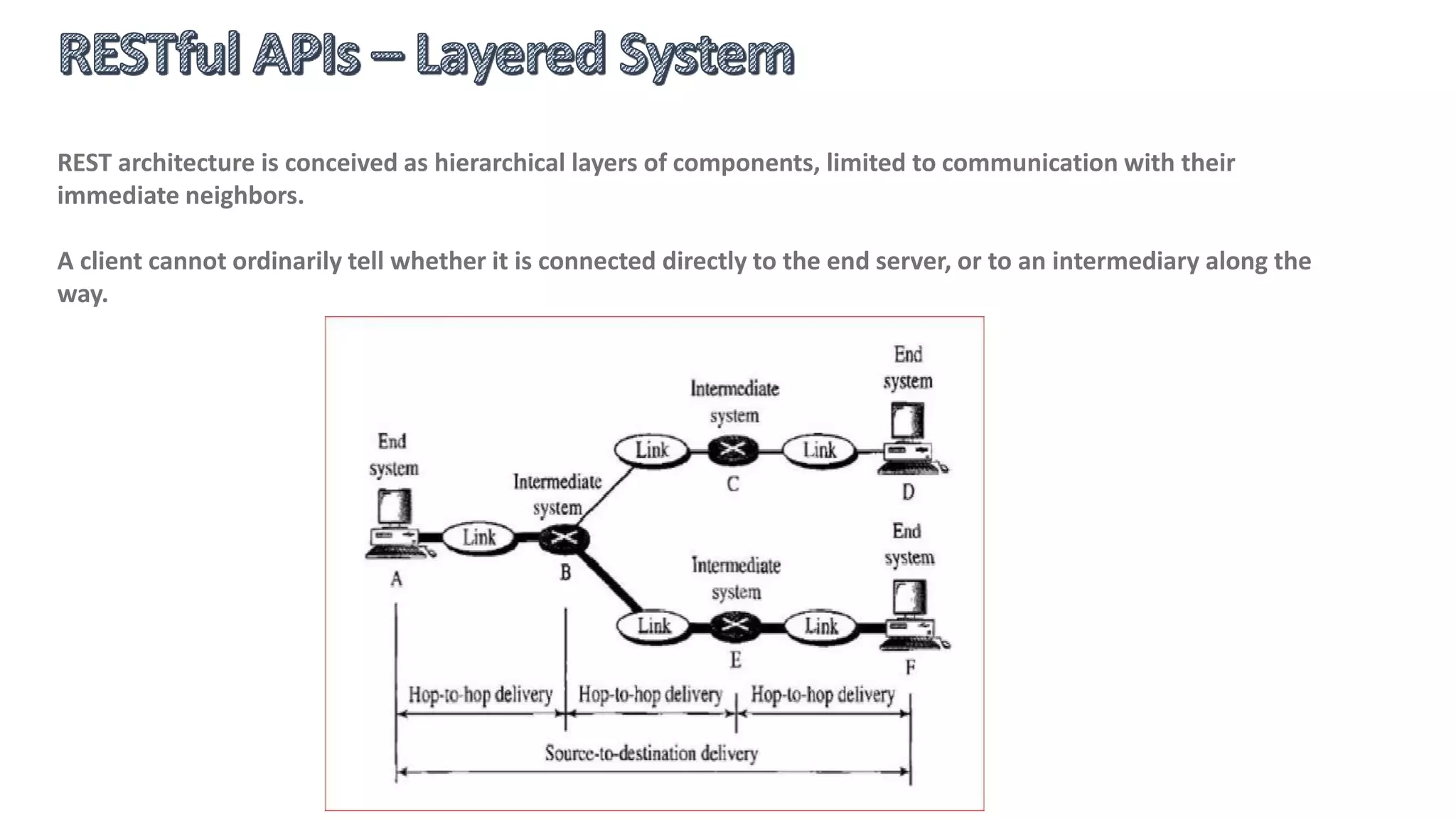
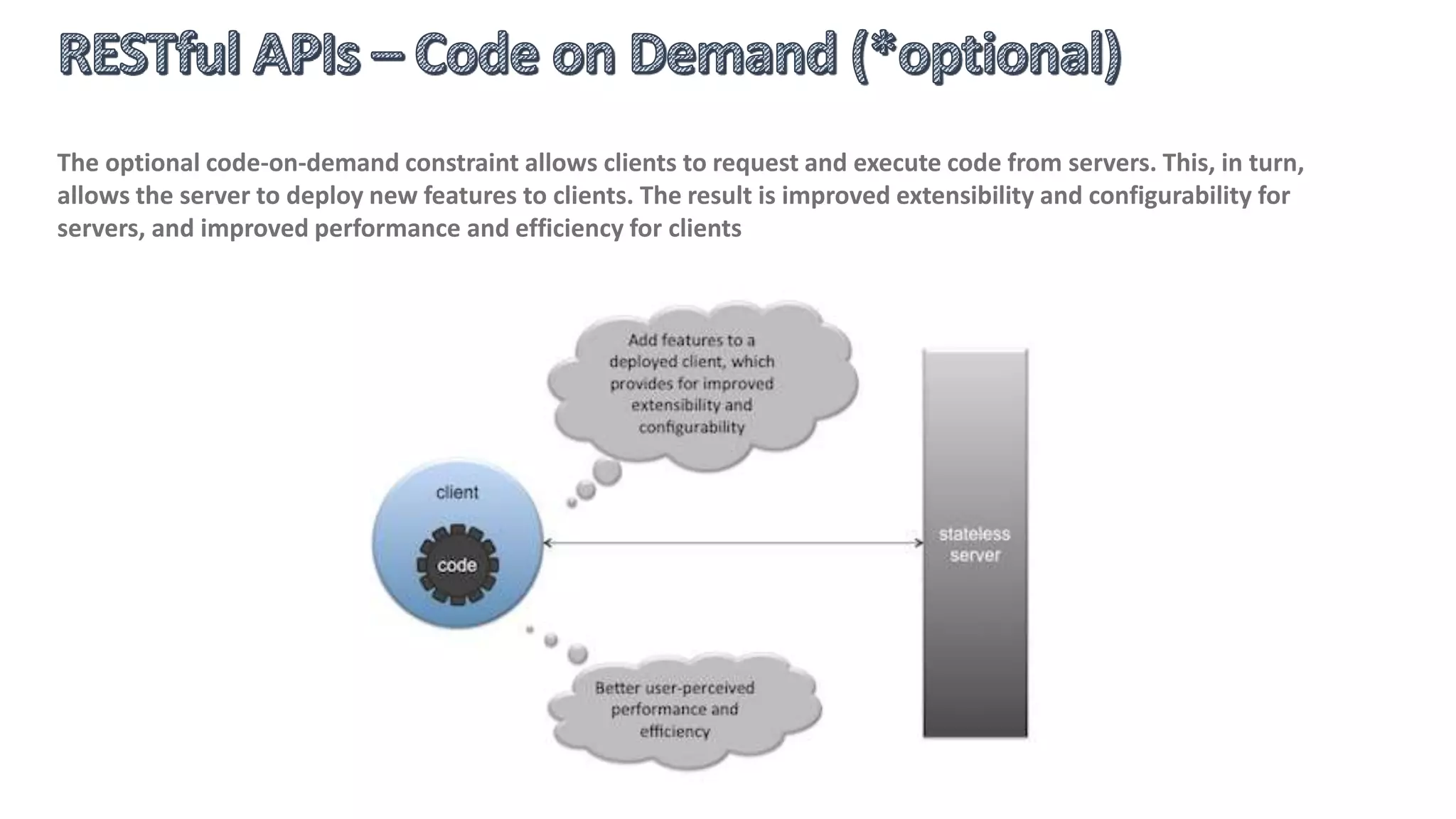
![The architectural properties affected by the constraints of the REST architectural style are:[4][6]
- Performance - component interactions can be the dominant factor in user-perceived performance and network efficiency.[7]
- Scalability to support large numbers of components and interactions among components. Roy Fielding, one of the principal
authors of the HTTP specification, describes REST's effect on scalability thus:
REST's client–server separation of concerns simplifies component implementation, reduces the complexity of connector
semantics, improves the effectiveness of performance tuning, and increases the scalability of pure server components. Layered
system constraints allow intermediaries—proxies, gateways, and firewalls—to be introduced at various points in the
communication without changing the interfaces between components, thus allowing them to assist in communication
translation or improve performance via large-scale, shared caching. REST enables intermediate processing by constraining
messages to be self-descriptive: interaction is stateless between requests, standard methods and media types are used to
indicate semantics and exchange information, and responses explicitly indicate cacheability.[4]
Simplicity of interfaces
Modifiability of components to meet changing needs (even while the application is running)
Visibility of communication between components by service agents
Portability of components by moving program code with the data
Reliability is the resistance to failure at the system level in the presence of failures within components, connectors, or data[7]](https://image.slidesharecdn.com/rest-api-workshop-140825133043-phpapp02/75/Building-Killer-RESTful-APIs-with-NodeJs-33-2048.jpg)
